Healthy Materials Lab
YEAR SIX
We respectfully acknowledge that we live, study and work on unceded, traditional and ancestral Lenapehoking territories of the Lenape peoples.

We respectfully acknowledge that we live, study and work on unceded, traditional and ancestral Lenapehoking territories of the Lenape peoples.
KPF REMOTE MONDAY LEARNING
US REGIONAL HEMP BUILDING ASSOCIATION
SUSTAINABILITY, MATERIALITY AND ENVIRONMENTALISM: A DISCUSSION ABOUT WHAT COULD BE…
REFASHION WEEK
CARBON + CHEMICALS
ASID: WELLNESS
NEIGHBORHOODS NOW
METROPOLIS MAGAZINE: DESIGNING FOR EQUITY AND WELL-BEING IN THE COVID-19 ERA
NORTHEAST SUSTAINABLE ENERGY ASSOCIATION: BUILDING ENERGY NYC 2020 CONFERENCE
THE US HEMP BUILDING SUMMIT #2
URBAN DESIGN FORUM: POWER AFTER THE PANDEMIC: HEALTHY HOUSING
SPIRE: CIRCULAR ECOSYSTEMS FOR SUSTAINABLE CITIES
RESEARCH IMPROVING OCCUPANT HEALTH WITH GERMICIDAL UV LIGHT
TOOTH BIOMONITORING WITH MT SINAI
NIH STUDY ABCD RETURN OF RESULTS TASK
BY DESIGN AFFORDABLE HOUSING INTERIORS
ELDER HOUSING WHITE EARTH, MN

The Healthy Materials Lab
Parsons School of Design

The New School
New York, NY
Director, Alison Mears AIA LEED AP Director of Design, Jonsara Ruth Assistant Director, Ahalia Persaud Senior Design Researcher, Catherine Murphy Senior Design Researcher, Leila Behjat Administrator, Ava Robinson
Senior Researcher, DhML, Luam Melake Podcast Producer, Burgess Brown Communications Team, Cristina Handal Communications Team, shirin anlen Communications Team, Ijeoma Nwatu Researcher, Samantha Bennett
Healthy Materials Lab Advisory Committee
Ana Baptista
Kate Daly
Joanna Frank
Dr. Maida Galvez
Rolf Halden, Ph.D., P.E.
Seandra Pope
Susan Szenasy
Joel Towers
Faculty Researchers
Andy Bernheimer
Hee Chan Kim
David Leven
Helen Quinn
Lucille Tenazas
Student Researchers
Weronika Banas
Dani Castillo
Pavithra Chandrasekhar
Perri Eppie
Carey Gallagher
Olivia Hamilton
Eric Hu
Logan Magee
Nada Salem
Meryl Smith
Jordan Taylor
Hana Wilson
Donghia Healthy Materials Library Student Researchers
August Rust
Healthy Materials Lab is part of the Healthy Affordable Materials Project funded by a grant from The JPB Foundation
June 2021


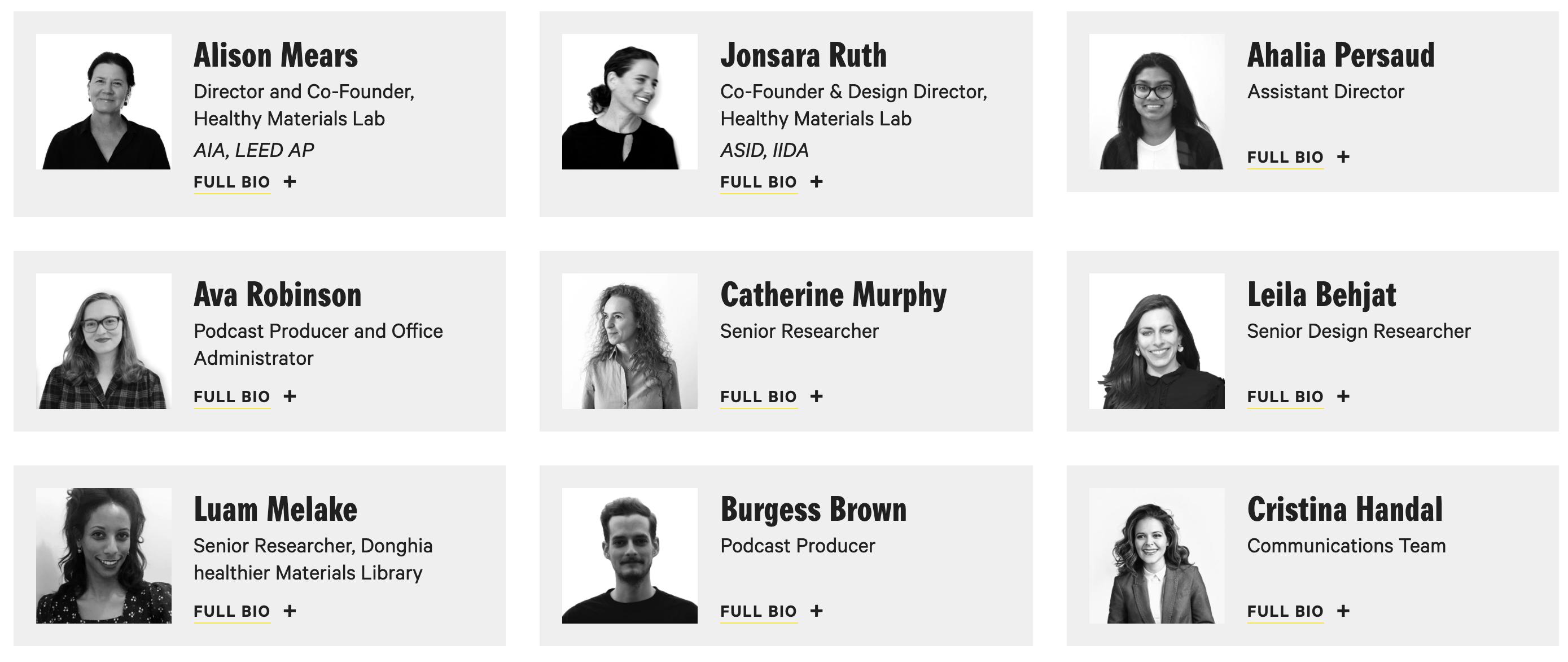
We are Healthy Materials Lab, a design research lab at Parsons School of Design. Today’s affordable housing is not healthy housing—and this needs to change.
This year has been a time of major progress in our team’s efforts to make every affordable home a healthy home. We continue to bring our research, design thinking, and education capacity to scale in order to persuade materials manufacturers, architects, and developers to act on what we now know about decreasing toxics in affordable housing.
The continuation of the global COVID-19 pandemic throughout Year 6 created significant challenges. The team had been off site in NY and in some cases out of the city. Adjustment was needed to an all virtual format, which shifted our day-to-day work and brought into focus the urgency of our efforts. A report, authored by The New School’s James A. Parrott and Lina Moe, revealed that COVID-19 is “disproportionately affecting already-vulnerable workers and communities. This public health crisis has produced a new appreciation for the stark disparities of inequality that have been coagulating in the city’s economic arteries.”1 This disparate impact points to serious societal fractures which, though widely known, have not been addressed by government or civil society with solutions equal to the problem.
We are optimistic that despite the difficulties we face as a country, and the serious global implications of the virus, we will continue to keep healthier housing top-of-mind for the key stakeholders who are helping us make healthy building materials standard in affordable housing in the United States. We are confident that our systems approach to making change in affordable housing will enable us to effectively confront the new challenges ahead. It is no secret that the construction of affordable housing has been historically underfunded and a lack of routine maintenance has led to the widespread use of low-cost substandard and toxic materials in the construction and renovation of housing for low income families. To make matters worse, a long history of racist housing policies that discriminate against BIPOC communities and forefront construction
1 The New Strain of Inequality: The Economic Impact of COVID-19 in New York City
A report by James A. Parrott and Lina Moe April 15, 2020
cost-savings, rather than occupancy health, has resulted in the use of poor quality, frequently toxic building materials that can be directly linked to negative health effects for residents. Local communities have been largely excluded from any involvement in the process of planning and building affordable housing.
We are committed to raising awareness about toxics in building products and to creating resources for the next generation of designers and architects to make change today. We are an interdisciplinary, international, and professionally diverse collective of graduate students, alumni, and faculty.
Social justice is a core mission at Parsons School of Design, The New School. Parsons’ research labs adopt a theory of change that draws from a comprehensive, interdisciplinary approach and a range of expertise in strategic design, positioning the research within the context of social justice. Working on a range of projects that address systemic change, Parsons brings an extensive expertise in the built environment, an understanding of the importance of communication design to drive change, a historic ability to develop and implement innovation in a range of design scenarios.
The Healthy Material Lab (hereafter “HML”) was launched as one of the first Parsons Design Led Research Labs with the receipt of a grant to support the Healthy Affordable Material Project in 2015. HML is one of four partner organizations of the Healthy Affordable Materials Project.
The Healthy Affordable Materials Project, is a collaboration of the Healthy Building Network (HBN), HML, Health Product Declaration Collaborative (HPDC), and Green Science Policy Institute (GSPI). Funded by a grant from The JPB Foundation, the Healthy Affordable Materials Project seeks to improve the lives and health of residents living in affordable housing across the United States by reducing the use of toxics in the building product supply chain.

Under the Healthy Affordable Material Project grant, HML is focused on research areas in support of the project for the Affordable Housing (hereafter “AH”) sector. HML is undertaking fundamental research into AH to record best practices in effect nationwide. To do so, HML is using a case study methodology to understand and document the better building products currently being specified. We are creating a new resource for transparency and awareness in both the Donghia healthier Materials Library at Parsons and online on HML website. The goal of the materials libraries is to create simple resources and tools to support healthier specification practices for the next generation of designers, and the AH sector at large. To increase awareness of the issues surrounding building product selection and drive change in product selection in the AH sector HML leverages communications expertise to translate complex concepts and data into accessible forms. We are working with a range of partners in the AH and health sectors to test product performance in real world conditions in order to demonstrate better building product selection and installation practices. HML is also committed to sharing knowledge with the wider design community and fellow design academics, repositioning design education and practice to situate human health at the center of our work.

Low income families across the United States suffer disproportionately from exposure to toxic substances used in building products. These exposures result from chemicals that are released into the air and dust of homes and schools during routine occupancy and as part of maintenance and renovation projects. Low income communities are also impacted by greater exposure as a result of the geographical proximity of affordable housing to product manufacturing factories that emit toxic chemicals, dumps, incinerators, and recycling facilities that process discarded materials. Factory and construction workers and children are particularly physiologically vulnerable and likely to be impacted by these toxics. Many chemicals commonly used in building products also pose hazards to the natural environment. Because these highly toxic chemicals are longlived and pervasive in the marketplace, they are difficult to control.
It is well established that toxic exposures can be lessened through the intentional reduction of toxic materials in building products. A deliberate campaign to change the chemical formulations of commonly used building products (e.g. paint, pressure-treated wood, and engineered wood), has led to the reduction of lead, arsenic, and formaldehyde use in the last twenty years. Today there are continuing efforts in reducing toxic exposure to widely recognized chemical hazards in building products through decreased percentages of VOCs, phthalates, and flame retardants. Despite these successes, there are still many toxics in the built environment that require attention. Further, successful toxic reduction has primarily occurred in high end products and often takes decades for this market impact to trickle down to more affordable products.
Affordable housing providers seeking to use less toxic building products face many obstacles. A fundamental obstacle is the lack of transparency of the chemical content of building products, making it difficult to make informed decisions about reducing potential toxic exposures. This lack of information is compounded by an array of “green certifications,” many of which rely upon incomplete and unverified information. Commercial developers are often able to navigate this web of certifications with support from additional sustainability staff or consultants; however, affordable housing project budgets are not able to support this extra support. Similarly, less toxic products are often introduced with a premium price which are beyond the budgets of affordable housing developments, including new and retrofit construction. As less toxic building products are introduced in the high-end residential and commercial building stream, older, less healthy building products are passed downstream to lower wealth communities.

An unintended consequence of green building standards and government are the incentives that encourage recycling and reuse of older products containing toxic chemicals. Recycling is viewed as desirable for its financial or social benefits, but the passing on of hazards is not always a consideration. These examples illustrate the complex problems presented to low wealth communities by the life cycle of exposures to toxic chemicals. They also demonstrate the need for both a comprehensive, integrated research program and the development of strategies to systematically reduce toxics in all building products as the most effective means of reducing these hazards in affordable housing communities.
The best way to prevent exposure to toxics is the reduction or elimination of their use at the source. The Healthy Affordable Materials Project will reduce toxics for families living in low income and affordable housing by scaling the use of new transparency and disclosure tools making it easier for decision makers (designers, architects, developers) to avoid the most toxic chemicals present in the building materials commonly used in affordable housing. Increased transparency and disclosure will drive market change by incentivizing building product manufacturers to reduce the use of toxics in their products, as an alternative to disclosing negative information. This will result in an increased availability of healthier products to the affordable housing market.
HML’s work on the activities and goals of the HAMP project is focused on scaling positive impact to replicate, adapt, broadly inform and transform current building practices in the AH sector initially within the first three-year time frame of the grant and now within the second round of funding received in 2018.
In addition to the HAMP project, HML has expanded its practice based research to include a wide range of populations including early childhood, seniors, rural populations and residents in post-industrial cities. We have formed new partnerships to support new projects including both nonprofit and for profit organizations and adopt strategies acquired in our HAMP work and consistent with our Parsons’ mission driven agenda. We continue to evolve and adapt our work within the core context of social justice. This year end report from HML is a summary of our activities over the last 12 months.

In the broadest sense, our goals are for healthier spaces and healthier lives. To achieve this, we strive to:
1. Improve today’s commonly used materials to reduce exposure to toxics and improve health.
2. Build knowledge and awareness of today’s healthier material alternatives —make them more marketable, accessible, and popular.
3. Work to implement tomorrow’s healthy materials.
4. Partner with manufacturers to promote transparency and drive innovation.
5. Create healthier homes for all people.
Ladder of Engagement: Big Duck
Supporter: interested in the issue and eager to learn more
Advocate: adopts healthier building protocols and implements in practice
Observer: new participant who becomes aware of the issue
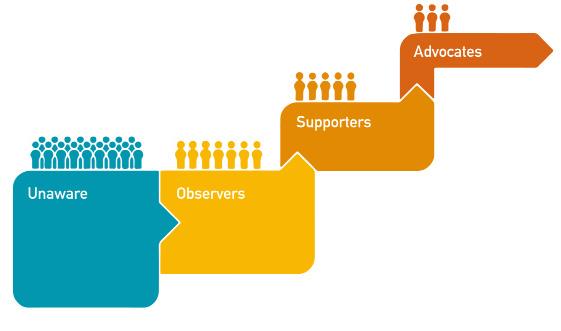
Ladder of Engagement. By measuring The ladder of engagement is a framework that asks users to take steps towards achieving a larger goal. Developing the ladder of engagement helps us to predict how we can cultivate and move participants into the active role of being material health advocates and practitioners. At HML we measure our impact and evaluate the outcomes of our ecosystem of initiatives, using three main metrics.
Quantify the Number of Participants. We are measuring participation from affordable housing providers such as designers, architects, specifiers, developers, owners, and the community. We are also measuring our reach across faculty and students, governing entities in New York City, and our influence across manufacturers and trade associations.
Quantify Financial Investment. By measuring our impact and comparing the results of the Lab’s multi-pronged initiatives with our financial investments, we can better strategize around which approaches are most effective in moving participants up the ladder of engagement.
Gauge Level of Engagement. Through our use of analytics tools to measure website traffic, new social media follows, click through rates, resource downloads, page visitation statistics, content referrals and more, we aim to track the movement of participants from being unaware of issues to eventually becoming advocates.
We are using a combination of approaches to inform our theory of change.
Some of HML is situated within The Healthy Affordable Materials Project (HAMP); a systems-based approach to reducing toxic chemical exposures from building materials and furnishings through the creation of actionable alternative design products. HML’s work integrates healthy building protocols, healthy products and green science with design research for affordable housing construction and retrofit in order to achieve scale and broad implementation across socio-economic communities within the US. Our broader goal is to align healthy materials with design research on innovative construction methodologies, durability, forward looking policy, behavior change, market forces, and aesthetics; and in so doing, influence the entire housing sector while reducing toxic chemical exposure throughout the supply chain.
Unaware (most people)
GOAL: BUILD AWARENESS THOUGH PHYSICAL AND ONLINE ENGAGEMENT
What do we do to build awareness?
Through the use of healthier building products and furnishings, the built environment contributes to the improved health of all people, especially lowest income communities.
UNAWARE
DEVELOP RESOURCES THAT ENABLE
PEOPLE
ACT (ONGOING)
How
GOAL:
THAT
How
How
Who
We identified a lack of awareness of the issue of toxics in the built environment as a fundamental barrier to change. This is a general problem and we launched our communications strategy to address this issue. Through the roll-out of this strategy we discovered that the ladder of engagement could be adapted more generally to make systemic change.
We have established a research foundation for our work. Through the documentation and evaluation of current best practices in the affordable housing sector – from funding and policy, to design and construction and finally in occupation. This work was and is documented in our five case studies. Current best practices in the material health field impact the work of “supporters” and advocates. To address other participants on the ladder and cultivate a greater understanding of the issues, we needed to expand our methodology to include:
1) Library and Resources
2) Education
3) Communication & Advocacy
4) Product Evaluation Tools
How
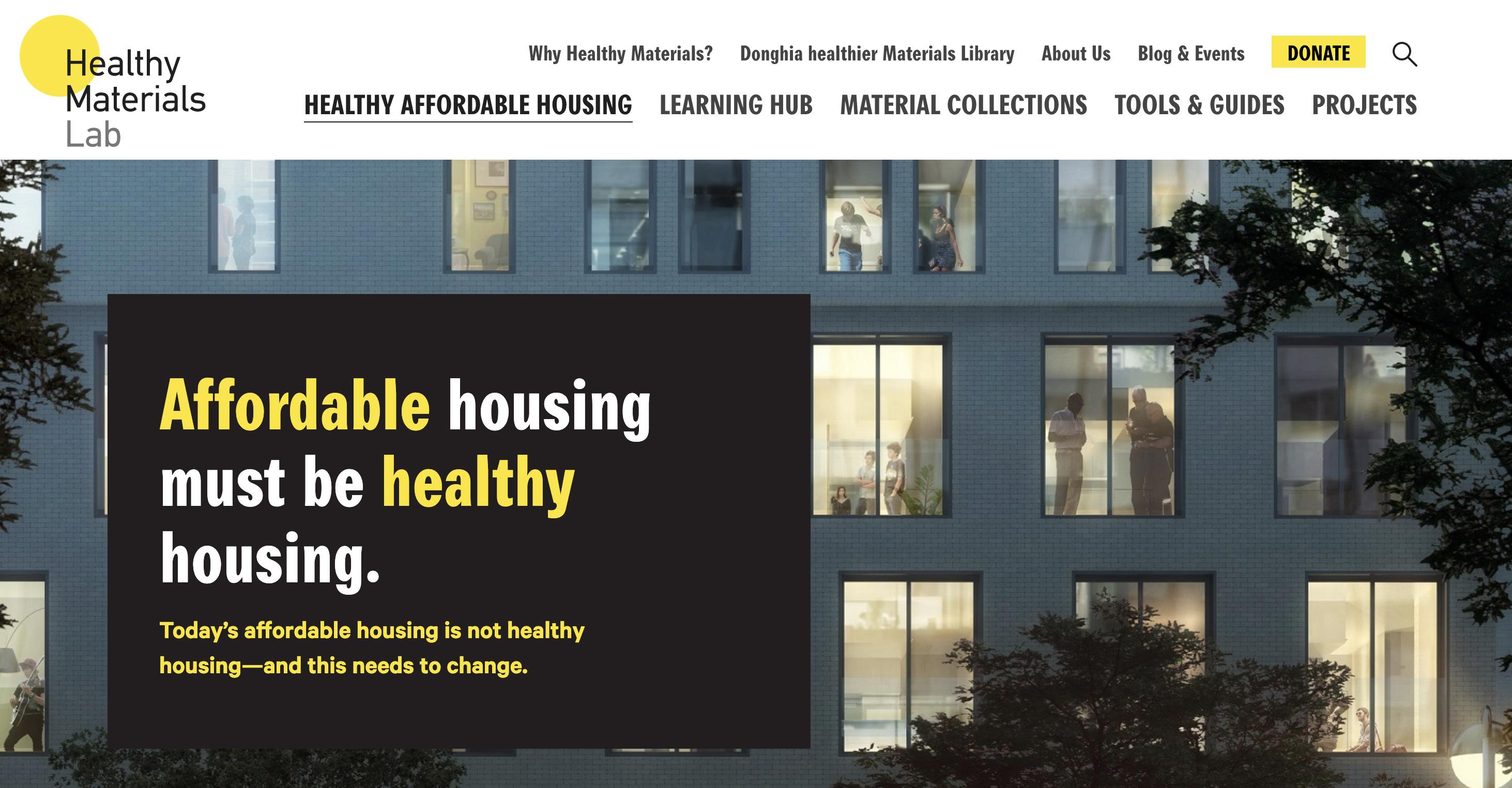


The HML website was launched in January 2018 and continues to be updated with additional resources and tools. This year we reviewed this site to add new data and SEO analytics and capacity and plan for future change.


The theory of change described in the original grant application relies upon the adoption of full transparency and the complete disclosure of building product contents in order to drive behavior change. It also depends on access to educational programs that share new knowledge to accurately document the contents of typical building products. A fully informed decision-maker will select alternatives to toxic materials when the information about a products toxic contents is disclosed, when feasible alternative choices are presented, and when the information is reliable and accessible. How do decision makers access accurate information?
HML is using our broad and effective design expertise to demonstrate to key audiences how a reduction in toxics in building materials will improve the health of affordable housing residents, communities, and individuals who come into contact with materials at all stages of a product’s life cycle. We translate information into effectively designed and executed communications materials to empower decision makers. We are also developing new healthier product specification tools to support more accurate specification, and are providing healthier product samples to aid decision makers in selecting healthier affordable products.







Parsons has historically maintained a Materials Library adjacent to Architecture, Interior Design, and Product Design studios. The library has provided material samples and a connection to manufacturers. As a result of the grant from The JPB Foundation, HML has reconfigured the library with an enhanced mission to create a range of new physical and digital material resources for all students and faculty at The New School, the AH community, and the NYC design community. The library will become a critical resource for both the university as we educate future designers and for the industry at large which looks to Parsons as an innovator in the field of design.
In order to position The Library at the forefront of the industry, we have researched precedents of national and international libraries and resource centers. Over the remainder of the grant, we will continue to collect and build lists of healthier products currently specified and installed in AH developments across the country.
As part of our work with The Materials Library, we are collecting and exhibiting physical samples of the healthiest materials currently available on the market. This
materials collection involves outreach to product manufacturers. In this process, we advocate for increased transparency and manufacturer engagement via the Health Product Declaration tool as a recommendation for inclusion in our library.
Based upon data shared by manufacturers, we aim to ease the process of identification, prioritization, and action on toxic chemical hazards, and we work with manufacturers to drive innovation through market demand. Another important aspect of The Library work is the documentation of best practices and product databases extracted from our ongoing case studies research.
With the closure of The New School from March 2020 to August 2021 due to COVID, the Donghia library as a physical library was also closed. Research continued off site and the library reopened with a new Senior Researcher and a new program in August 2021.
Engagement with the library moves visitors from unaware to advocate. More so, orientations serve as an opportunity to introduce students and professionals to the issue of material health.

Textiles! We sit on them, we sleep in them, and we wrap ourselves in them. Hemp makes a superstar healthier textile - contributing to healthier interiors, healthier apparel, and a healthier future for our planet.
Healthy Materials Lab was joined by the founder of Hemp Traders, Lawrence Serbin. HempTraders was founded in the 1990’s when it was still illegal to grow Hemp in the US, so they got a head start on the American market by importing quality hemp textiles and products from China. Lawrence, a full-on Hemp Pioneer, shared a deep understanding of hemp fiber and textiles from decades of experience. Hemp Traders is the largest supplier of hemp fiber products in the USA.
This lunch and learn was held virtually, which allowed the presentation and following conversation to be recorded. It is available on YouTube for all to access.
To learn more visit: www.hemptraders.com
112
VIRTUAL ATTENDEES 165
YOUTUBE VIEWS
We opened these events and conversations around products and materials to a broad Parsons audience, as we believe all disciplines can learn from the vision of the companies and their approach to health advocacy and the built environment.

We have added new materials to all material categories.

We are continually vetting new products to see if they meet our criteria.

Active correspondence regarding documentation and certification.
20 PRODUCTS BEING VETTED
For new low embodied carbon criteria.

In Year Six, Healthy Materials Lab continued to develop the Material Collections. Two new collections of materials were added this year, along with the continuous addition of new materials to existing collections. New collections require a lot of energy and time in researching the aspects of health and the respective product categories.
The work on HML’s Material Collections was enhanced by adding a highly requested Textile Collection. Healthier and more sustainable textiles can address footprints of fiber cultivation, production and toxicity of any applied treatments. The production of both natural and synthetic textiles can require massive amounts of energy, water, and toxic chemicals.
Research around materials with Low Embodied Carbon began during Year 6, as well as the initiative to add embodied carbon information for existing products in our collections.
Material collections increase engagement by building awareness of material health. HML researchers have organized these highly curated collections using strict criteria. By communicating this criteria to our users, we are helping to turn supporters into advocates
Parsons is a hub for national and international design research with extensive experience and capacity to work between theory and practice, through collaborations with a broad range of industry partners. As a trusted university partner, we provide neutral territory to enable a wide representation of stakeholders to convene and address all of the complex issues associated with the building materials system. Our research is informing our colleagues in professional practice and our fellow faculty through public lectures and presentations and through our social media presence.
Parsons is the largest art and design school in North America and is ranked #1 in the U.S. and #3 in the world1. We are transforming the education of designers, and in so doing educating a new generation of design professionals who will carry their educational experience into their careers and transform industry. We are offering new studio classes, creating modules that can be incorporated into existing courses, and working with HAMP partners, such as HPDC, to develop curricular modules. With education as our platform, we are creating a greater understanding and awareness of the intersection of design and health.
1 https://www.qschina.cn/en/university-rankings/university-subject-rankings/2021/ art-design








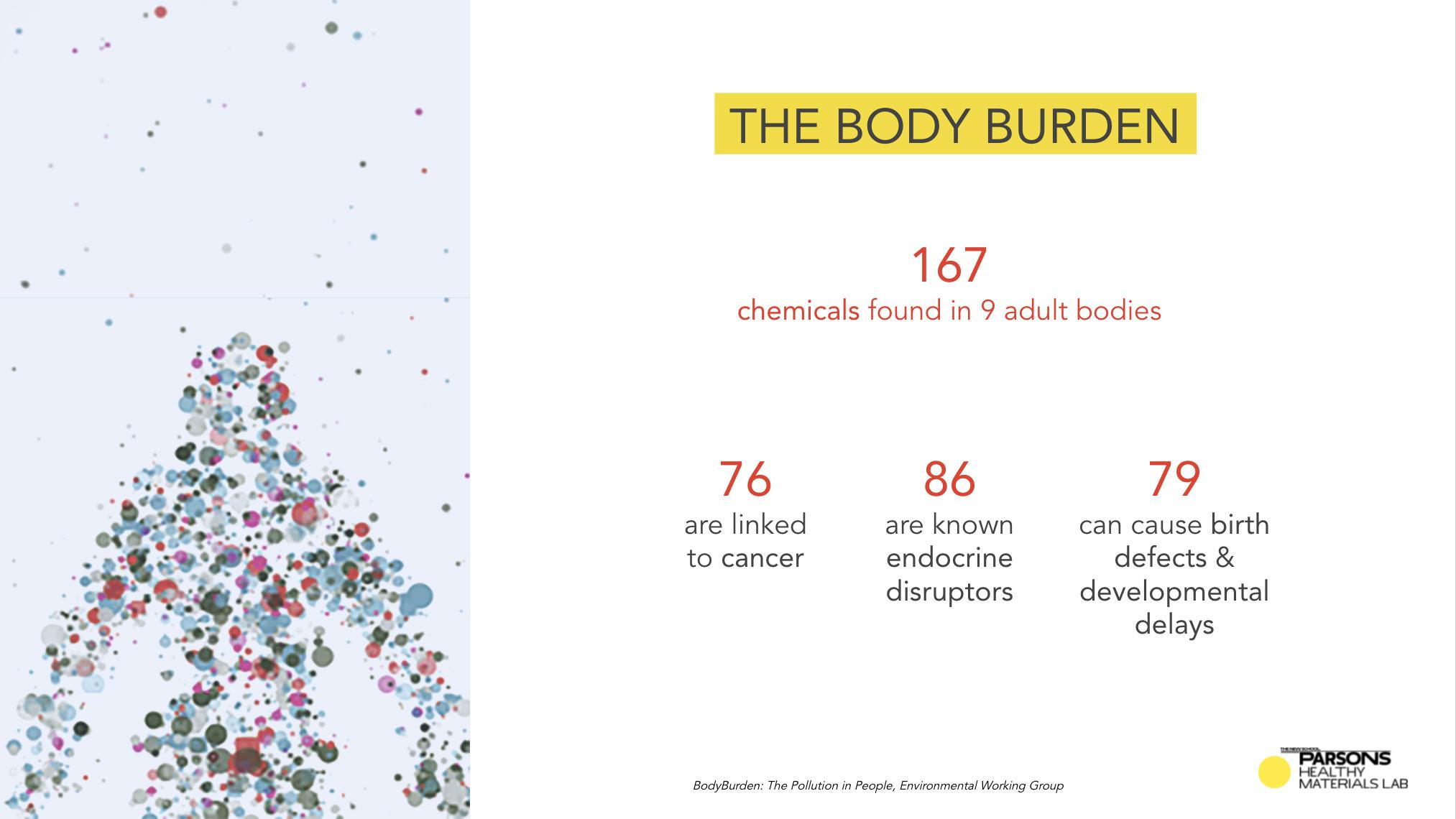

At HML we explore the relationships between human health and building materials. We make presentations to a range of different groups. These presentations enable groups of designers and architects to become familiar with materiality. In the last year we made presentations at universities in the US, Germany and Australia.
COVID has revealed the profound and compounded inequities shouldered by poor communities. The 21st century is marked by rapid and potentially catastrophic global climate change. We face the depletion of natural resources and the imminent degradation of the earth’s unique and varied ecosystems. Our actions as architects and designers have impacts on everyone: the most immediate and profound impacts we can have as designers are on the most vulnerable people in our communities. Let’s look at why that is so. Our indoor spaces are filled with invisible chemical hazards, making indoor air 3-5x more toxic than polluted outdoor air. How did we get here? Most of the chemicals that are commonly used in construction in the US are not regulated. Only 250 of the over 85,000 chemicals currently in use are tested and only five have been partially restricted by law. Many of these chemicals are toxic and are becoming part of everyone’s biology. There
261+ PARTICIPANTS FROM SCHOOLS ON NEXT PAGE
is also a direct connection between carbon emitted in the production of petrochemicals and the specification of petrochemical based building products. Reducing the use of these building products reduces carbon emissions and reduces the unregulated harmful chemicals that are the product of these processes. Plastics and petrochemical derived chemicals are an important part of the construction supply chain. Not only are the products derived from petrochemicals bad for the environment but they are harmful for us. Many of the products that are typically used in current construction, contain the chemicals that are linked to human disease. Polystyrene, phthalates, BPA PVC and flame retardants are all linked to human diseases. These materials shed and release those chemicals into our built environments which are then absorbed and become part of our biological systems.
It is critical that we build healthier and more resilient communities. Dramatically reducing people’s exposure to harmful chemicals is an issue of equity and a public health priority to protect those who have suffered generations of institutionalized racism. In our work we look to remove these chemicals and propose viable, affordable and benign alternatives particularly in affordable housing.
These lectures allowed design students to get familiar with materiality and the concept of human health and chemicals in materials, spurring them on a journey to become supporters & advocates.
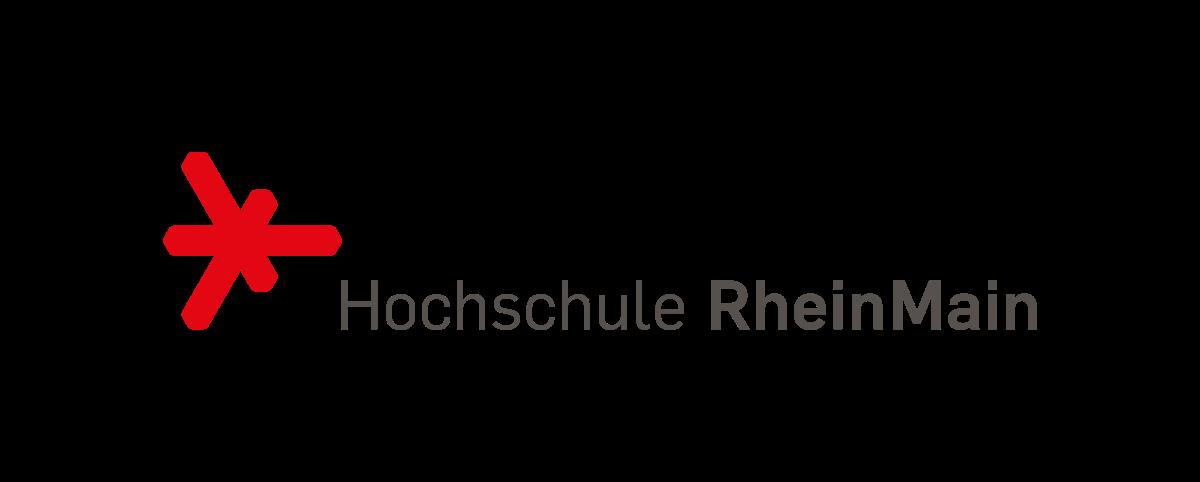







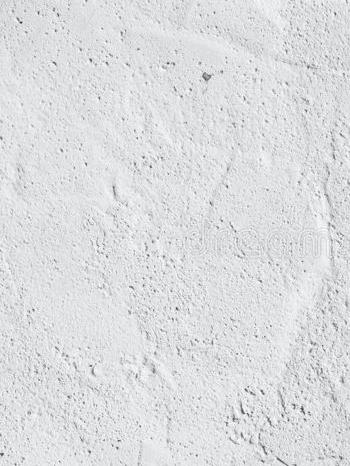

It’s estimated that Americans now spend approximately 90% of their time indoors, and studies show that the spaces in which we spend that time directly affect human health and performance.
On Tuesday, September 15th Parsons Healthy Materials Lab hosted Dr. Anna Young from the Harvard T.H. Chan School of Public Health for a lecture titled Our Global Chemical Experiment: How Healthy Building Strategies Can Reduce Exposures to Chemicals.
Have you ever wondered where Healthy Materials Lab gets its information? For years, the Harvard T.H. Chan School of Public Health has been leading the charge in groundbreaking research about public health. In the upcoming lecture, Dr. Anna Young discussed her ongoing research and why it matters.
Anna Young is a postdoctoral research fellow in the Department of Environmental Health at the Harvard T.H. Chan School of Public Health. Her research focuses on healthier materials and products in buildings as a strategy to reduce
our exposures to toxic chemicals. She recently earned her PhD in the department, where she conducted dissertation research about global exposures to chemicals in office buildings, the hormonal activities of building dust in cell assays due to chemicals, and the benefits of healthier materials interventions to reduce toxic chemical loads in buildings. Anna also holds an MS in Environmental Health from the Harvard Chan School and a BA in Computer Science and Environmental Studies from Yale University. 187 ATTENDEES
This lecture allowed its attendees to gain an inside look at the research of healthy materials and toxins that can exist in regular buildings, making them more aware of their surroundings and more likely to become advocates.

Ancient Wisdom / Modern Practice engaged in a dialogue about the relevance and benefit of indigenous, vernacular, and often ancient knowledge, to further the discussion and practice towards resilience and healthier environments in a warming world. This lecture looked at case studies on tectonics, materiality, and ecological adaptation in embracing greater environmental equilibrium. The lecture and panel discussion were part of the Archtober 2020 Festival.
PANEL:
Emily Moss, Parsons School of Constructed Environments
Martina Kohler, Parsons School of Constructed Environments
Allyson McDavid, Parsons School of Art and Design History and Theory
SPEAKERS:
Leonardo Figueroa Helland, Milano School of Policy, Management and Environment
Jonsara Ruth, Parsons Healthy Materials Lab
Julia Watson, A Future Studio
176 ATTENDEES 43
VIMEO VIEWS
Ancient building practices often exemplify healthier material choices; by presenting this knowledge, an audience of observers were given precedent in which their journey to advocacy can begin.

BioFabricate was an all-day free event on December 7th, which launched the first comprehensive fashion industry report on biomaterials. This event featured the report’s co-authors, Biofabricate and Fashion for Good, along with guests, they shared vital learnings from leading biomaterial innovators and consumer brands.
Parsons Healthy Materials Lab hosted Amy Congdon from BIOFABRICATE for a talk introducing the field of biofabrication and how scientists, designers and engineers are growing the materials and products of the future. The lecture gave examples of companies at the forefront of the field today and their revolutionary technologies. Congdon also covered realistic timelines and what it takes to scale innovations that can have real world impact.
Amy is a designer by training who has been working and researching in the field of biofabrication for over 10 years. She holds an MA in Material Futures and a PhD from the celebrated design school Central Saint Martins in London. Her PhD research ‘Tissue Engineered Textiles’ was conducted in collaboration with Kings College London (in the Tissue Engineering & Biophotonics department based at Guys Hospital). Amy received her
238 ATTENDEES
introductory training in tissue engineering at the world renowned SymbioticA based at the University of Western Australia. Her work has been featured globally in leading publications and books, and in exhibitions held at venues including the Cooper Hewitt Smithsonian Museum (New York, USA) Centre Pompidou (Paris, France), and Science Gallery (London, UK). In her professional career Amy has worked both in industry and in house at biotech start-up Modern Meadow as Associate Director of Materials Design. Amy is currently Head of Design Intelligence at BIOFABRICATE, a global network serving the needs of biomaterial innovators, investors and consumer brands. Biofabricate’s vision is ‘A sustainable material world. Built with biology, not oil’.
SPEAKERS:
Dr. Amy Congdon, BIOFABRICATEThis lecture allowed observers to gain an inside look at the research of biomaterials, making them aware of materials for the future that can be grown, turning them to supporters.




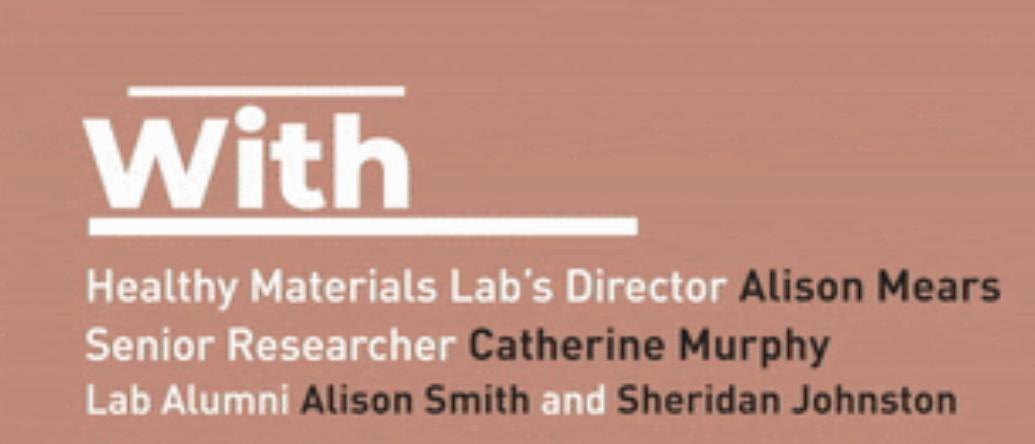
Finding healthier materials to specify for your building projects isn’t easy. It can be timeconsuming and resource intensive. Sometimes it’s hard to know where to start because there’s just too much information to sift through, or the information is too technical.
With this in mind, Healthy Materials Lab has created a four-course online certificate program. The Healthier Materials and Sustainable Buildings program will equip you with the right tools to make informed decisions and supply the necessary background information on basic construction materials, their chemical makeups and their relationship to human health. Each online course is completely self-paced so you can take it on your own time.
In Year 6, to promote the four-course program, HML held a virtual Open House and Sneak Peak on two different evenings for those interested in our online learning programs. During these events, graduates of the program will also be there to share why the 4-course Healthier Materials and Sustainable Building program was instrumental in transforming their practice.
A quote from the event: “We don’t consider these courses to be limited to designers. It’s really important that the whole team, that everybody throughout the whole process of the design work understands these issues and are able to communicate this to our clients, to the teams and to our collaborators. We support everyone to take it, at every level.” Alison Smith, HKS
SPEAKERS:
Alison Mears, Co-Director, Parsons Healthy Materials Lab
Catherine Murphy, Senior Researcher, Parsons Healthy Materials Lab
GUESTS:
Allison Smith, Sustainability Leader, HKS Architects
Sheridan Johnston, Junior Interior Designer, HKS Architects
Shefali Sanghvi, Associate, Dattner Architects
51 ATTENDEES 630+ VIEWS ON YOUTUBE AND VIMEO
This event allowed an audience of observers and supporters to learn more about the courses HML offers and hear from alumni of the program who are now healthy materials advocates.


Healthy Materials Lab co-director Alison Mears and researcher Cristina Handel co-taught a senior capstone studio for Parsons Bachelor of Fine Arts in Architectural Design.
Students in this capstone studio developed a final studio project that synthesized prior learning from their Architectural Design program with a specific focus on the relationship between architecture as environmental and material construction and the well-being of the human and global ‘body’. The work combines capabilities in studio, theory, history, and technology within situated historical, cultural, political and social frameworks. As the culmination of their undergraduate educational work at Parsons, students engage in an architectural project with a focus on comprehensive structural, material and environmental resolution. Students worked towards demonstrating and enacting their projects as a form of social engagement through material, environmental and spatial exploration.
FACULTY:
Alison Mears, Co-Director, Parsons Healthy Materials Lab
Cristina Handal, Parsons Healthy Materials Lab
14 STUDENTS
This undergraduate level studio allowed a group of observers to take a deep dive in materiality, spurring them on a journey to become supporters and advocates.





The Lab established a new network of architecture and design educators to support the open exchange of information about Material Health in the Built Environment. Faculty colleagues from Art and Design Colleges and Universities are invited to join. Parsons Healthy Materials Lab in New York City has been conducting design research on this critical new topic for design and architecture and we are creating a host of new information and resources. All of our information and resources are available to members of our academic network to use in their course materials and in their existing architecture and design programs. The network is free to join.
In exchange, the Lab asked that members, in turn, provide and share anything that they may be working on in this field in their own schools and communities. Not all members of the network have in-depth experience in the field of material health in the built environment. This topic is new to many. The Lab welcomed all experience and interest levels to join in the sharing of this information. All that is required of members is to participate in a conversation surrounding this topic. The goal of this initiative is to share trusted resources, create a platform on which healthy materials advocates can connect and share information
231+ MEMBERS 84+ DIFFERENT SCHOOLS
with other advocates. The members of this network will ultimately impart their knowledge to architecture and design students--the new designers of a better future.
In Year 6, with the help of ModLab, HML worked to improve the interface of the Academic Network page by enhancing user experience for members.
The goal of this initiative is to create a platform on which healthy materials advocates can connect and share information with other advocates. The members of this network will ultimately impart their knowledge to unaware students.
Syllabus Support and Examples
Syllabus support
BFA Architectural Design Studio: Schools and Place: The Transformational Power of Education in Lagos, Nigeria
MFA Interior Design Studio 3: Fostering Healthier Futures
MFA Interior Design Studio 3: NYC Dept of Health: Empowering Healthy Futures
MFA Interior Design Studio 3: Healthy Living with Grocery
Teaching Tools
Materials, their Chemistry, and Human Health
Material Health Overview

Certifications and Disclosures

Material Health Chemistry
Videos
Chemicals of Concern
Design Strategies
Building Materials
Construction and Post-Occupancy
Navigation Guide to Healthy Materials Lab’s Website
Affordable Housing and Beyond: Addressing the Needs of All Populations
Beyond Transparency: Improving Product Decisions with Transparency and Material Health Information
Transparency and Material Health “In Practice”
- Accessing and Using Transparency and Material Health Information
Managing Transparency and Materials Health in Practice: Introduction to Firm-Level Issues



RHODE ISLAND SCHOOL OF DESIGN DREXEL UNIVERSITY
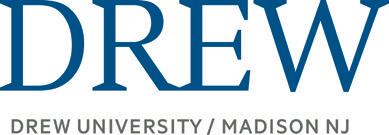

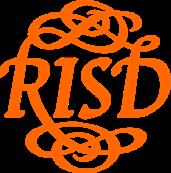
UNIVERSITY OF NOTRE DAME

HARVARD GRADUATE SCHOOL OF DESIGN

SYRACUSE UNIVERSITY

RENSSELAER POLYTECHNIC INSTITUTE
ELISAVA SCHOOL OF DESIGN & ENGINEERING
VIRGINIA TECH

UNIVERSITY OF ARIZONA
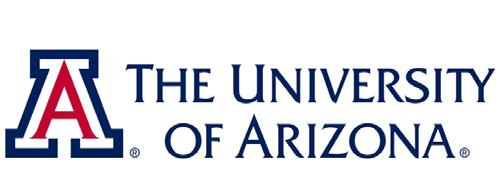
NEW YORK SCHOOL OF INTERIOR DESIGN



FASHION INSTITUTE OF TECHNOLOGY

CENTRAL SAINT MARTINS
TULANE


ARIZONA STATE UNIVERSITY


UNIVERSITY OF CAPE TOWN

DUKE UNIVERSITY

TUFTS UNIVERSITY

THE COOPER UNION

UNIVERSITY OF HOUSTON

DREW UNIVERSITY
UNIVERSITY OF THE ARTS LONDON


ILLINOIS INSTITUTE OF TECHNOLOGY





WOODBURY UNIVERSITY



THE UNIVERSITY OF TEXAS AT AUSTIN

UNIVERSITY OF ARKANSAS, FAY JONES

UNIVERSITY OF KANSAS, SCHOOL OF ARCHITECTURE AND DESIGN




THE NEW SCHOOL
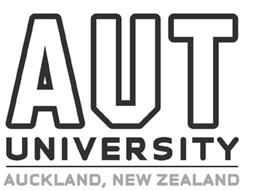




THE PENNSYLVANIA STATE UNIVERSITY

BOSTON ARCHITECTURAL COLLEGE

HML brings a range of expertise to the field of material health through the impactful use of a range of communications tools, including communications design and data visualization that support the translation of technical and scientific data into tools that influence decision makers. Drawing from industry consultants and in-house expertise, we are able to develop tactics and strategies to advance the mission of the Lab and accelerate change.
We have developed a communications plan to drive awareness, create demand, and drive change via new tools and resources. The plan identifies key HML platforms and their characteristics. Our planning enables us to connect all of our digital activities and funnel users through specific actions. The pathways enable us to convert participants to higher levels of engagement and expand our network – increasing our potential influence.











We have continued to develop, modify, and optimize our multi-pronged communication plan to drive awareness, create demand, and drive change via new tools and resources. Strategies with the goal of increasing our audience and transforming practice at multiple scales. Our strategic communications plan includes the marketing of our Online certificate program, promotion of our public events, sharing takeaways from our research, and awareness around innovative designers and materials on the forefront of the healthy materials field.
Through surveys, networking, and other research tools, we have gained deeper understanding and insight into our various audiences and honed our messaging accordingly. We have refined how, where, and when we message our various audience segments, which include undergraduate and graduate design students, practicing architects and designers, faculty, and community based organizations, in order to optimize our engagement with them.






Healthy Materials Lab’s website promotes transparency and advocates for an industry wide change in the material specification process. The goal of the website is to situate human health considerations as central to material specification. The website collects and curates a library of resources, including new content generated by HML, and is the virtual counterpart to the Parsons Donghia Materials Library physical collection of materials. By consolidating these resources into a simple Online interface, the site increases accessibility and facilitates the practical implementation of healthier building practices.
We forefront easy navigation and search functions to enable users to access concise information and navigate to their specific needs. The simple text is complemented by intuitive graphics, first person narratives and stories, and suggestions for related content throughout. The interconnections created between subjects emphasize the systemic nature of complex topics and allow users to easily access information.
As the site grows and evolves, we have developed additional tools and added more useful information. We are constantly working to improve user experience and clarity. In Year 6, we added the Learning Hub to our website. This addition to the website gathers all education resources, links, videos and relevant content in one place.
The HML website represents one of the most comprehensive efforts to guide audience members up the ladder of engagement from unaware all the way to advocate




The website is organized in order to address the needs of audience members ranging from Unaware to Advocate by providing information that introduces the issue and a host of different resources.
Why Healthy Materials? Donghia Healthier Materials Library About Us Blog & Events
Healthy Affordable Housing
How We Make Affordable Housing Healthier Resources for Affordable Housing Providers
Material Collections
Healthier Building Products
Healthier Design Alternatives
Natural and Healthy Databases of Certified Products
Design Forward Product Libraries
Projects
Podcast Case Studies
Demonstrations
Annual Reports
Learning Hub
Education Resources
Online Courses
Events on Demand
Short Courses
Resources
Education Events
Tools & Guides
HML Resources
HML Textile Guides
Material Health Research
Best Practices
Materials Guidance
WHY HEALTHY MATERIALS MATTER?
Emphasize the importance of the issue.
DONGHIA HEALTHIER MATERIALS LIBRARY
The hub of our physical presence at Parsons.
ABOUT US
Our mission, team bios, partners and goals.
BLOG & EVENTS
Stay up to date with the latest news and events.
HEALTHY AFFORDABLE HOUSING
Create urgency, housing needs to change. How and why we do what we do.
MATERIAL COLLECTIONS
A resource that combines product categories with guidance, tips and resources for more info.
PROJECTS
A place to highlight ongoing projects and collaborations
LEARNING HUB
A link to all educational content and resources.
TOOLS & GUIDES
An interface of hundreds of resources created by research partners and internally.
YEAR 6
8,868 FOLLOWERS
1,714 FOLLOWING
870 NUMBER OF POSTS 32K AVG. NUMBER OF ACCOUNTS REACHED PER MONTH
YEAR 5
7,992

1,740


685

Instagram is a large part of our communications strategy to strengthen industry partnerships, cross-promote content and reach a wider audience. In Year 6, we continued initiatives such as Material Mondays, and Featured Designer Fridays to share information about healthier material alternatives in a way that is engaging for designers and millennials alike.
We plan to continue using Instagram as an effective tool to develop HML’s communication strategy, broaden our reach and support our theory of change. As one of our key learnings, we found that Instagram is a great platform for building a network of independent designers who are pushing the boundaries on using healthier materials in new ways.
Our instagram profile is also connected to our Facebook page, where we are able to share the same posts and make sure to reach a similar audience that prefers this platform instead.
Instagram helps to increase supporters and broaden awareness of healthier materials among a design audience. Our account disseminates resources and knowledge of healthier materials in a visually engaging way that is both friendly and authoritative.
At HML, we use instagram to not only promote ongoing projects, research, and workings of the lab, but to also post digestible pieces of information. Campaigns such as Material Monday, Did you know? and Vote increased engagement and disseminates knowledge to a wide audience.



Material Monday highlights various healthy materials that we love. An example caption on a post for this ongoing campaign is: “Plywood has been one of the most trusted wood building products for decades. Regular glues used to bind veneers together to make plywood board present health concerns to our health. Formaldehyde (a known human carcinogen) is often used in composite wood products to make dry glue faster.”


3,399 ACCOUNTS REACHED PER POST ON AVERAGE



Feature Designer Friday allows us to put a spotlight on individual designers and design firms who are doing exemplary work in the fields of affordable and equitable housing, sustainability or material health. An example caption on a post for this ongoing campaign is: “Her work has focused on the oil and gas industry and how its adverse impacts affect the environment, the water and people. She centers feminist indigenous perspectives, particularly around water management and the decolonization of water policy.”



1,246 ACCOUNTS REACHED PER POST ON AVERAGE


A series of posts called “Did You Know?” allowed us to shared information about PFAs in a clear and understandable way. A caption for these post, for example, is “PFAS enter drinking water through firefighting foam used at military bases and commercial airports, industrial sites, and run-off or leaching from contaminated solids from wastewater treatment plants.”




1,466 ACCOUNTS REACHED PER POST ON AVERAGE



We have been using a LinkedIn company page to connect with individual professionals or companies that are neither on instagram or facebook or that prefer using this platform for their professional connections and interactions. Our followers on LinkedIn are mostly from the following industries: architecture & planning, design, higher education, construction, building materials, real estate, environmental services, civil engineering, research and nonprofit organization management. We leaned on this channel to communicate to professionals about our eLearning programs, invite followers to our events and share news or calls to action from the HAMP partners and other organizations that align with our mission.
LinkedIn Followers Breakdown:
Architecture & Planning 26%
Design 12%
Higher Ed 8%
Construction 5%
Building Materials 4%
Real Estate 4%
Environmental Services 2%, Civil Engineering 2%, Research 2%, Nonprofit Organization Management 2%
1,162 FOLLOWERS
LinkedIn helps to increase supporters and broaden awareness of healthier materials among professionals. Our account disseminates resources and knowledge of healthier materials in a visually engaging way and allows us to easily connect with other professionals working in related fields and keep track of developments in the industry.
“What’s it made of?” Pledge Cards

Parsons Healthy Materials Lab with the Center for Environmental Health, and the American Sustainable Business Council join forces with Sustainable Furnishings Council to encourage inquiry and improvement in the residential furniture manufacturing industry.
Together, we launched an environmental health initiative called “What’s it Made Of?” which encourages the elimination of dangerous substances commonly included in furniture production. This comes at a time when businesses are becoming increasingly aware that consumers desire healthier interiors. The initiative consists of a simple pledge for manufacturers to ask their suppliers about the substances in the materials they use and in the products that they make. The pledge reads:
“As a business leader, I am concerned about the health of our world - my employees, customers, communities, and the global environment. I am committed to reducing the use of chemicals that pose harm to human health and the environment. As a first step, I commit to ask my suppliers about the presence of chemicals of concern like flame retardants, fluorinated stain treatments,
antimicrobials, vinyl, and VOC’s including formaldehyde, that may be present in the products that we produce/specify/purchase.”
Signatures gathered at the launch numbered near 300 and continue to increase through the Sustainable Furnishings Council membership efforts. Sustainable Furnishings Education Fund is committed to supporting businesses in improving their supply chains, and in being useful to consumers, who prefer environmentally safe furnishings.
Coming together for this Initiative announced 2016, the Sustainable Furnishings Council, American Sustainable Business Council, Center for Environmental Health, Parsons Healthy Materials Lab and others are building upon efforts they have been making individually. Jonsara Ruth, Co-Director of HML, has been serving as a member of the board for Sustainable Furnishings Council the last two years and became Vice President of the board in January 2021.
Material transparency is key to improving the health quality of furniture. The furniture industry recognizes that ultimately, this requires a better understanding of their supply chains.







Trace Material explores the intersection of our lives and the lives of the materials that surround us, one material at a time. This year, for Trace Material’s second season, the podcast team at HML is investigating plastic. A little over a century ago, plastic was born out of a test tube in a chemist’s garage. In just a few generations, this material has grown to define our world. Our homes, our environment, and even our bodies have become plasticized. Join us as we uncover the human stories behind this synthetic material––we’ll be venturing into the fourth kingdom, visiting Tupperware parties held on Facebook Live and learning about the power of local communities to combat pollution.
Trace Material is honored to join organizations like PBS and NPR as a recipient of the National Endowment of the Humanities’s Media Production Grants. NEH has a long history of funding deep historical research that has been transformational in the way the American public views its own history, and we hope our listeners will change the way they look at a material that is currently covering our world.
6,830+ DOWNLOADS
Katharine Owens, a plastics researcher and University of Hartford professor, wrote a review about season 2 of Trace Material that said:
In this season of Trace Material, we dig into a material found in homes of a potentially unaware or observing audience.
“
So Engaging! I research plastic pollution and have been so thrilled to find this amazing podcast. It’s full of information but it’s not just that they share such accurate scientific material, it’s that they do an excellent job of revealing how plastics fit into our culture. I could not recommend it more!”
Trace Material is a podcast from Parsons Healthy Materials Lab at The New School that explores the intersection of our lives with the lives of the materials that surround us. Each season we dig into a material you might find in your home to discover what it can tell us about our shared history and culture.

No single material has had a greater impact on the modern world than plastic. This season, we will bring together diverse perspectives to tell the complex and nuanced story of plastics in the US. Through materials like PVC and products like Tupperware, we’ll explore how plastics have transformed our bodies, our homes and our environment.

Coming June 2021.
Trace Material currently has 4.9 out of 5 stars on Apple Podcasts.
Here’s what listeners have been saying:
“Time well spent!! Great content and storytelling! I wasn’t sure it would be for me but super interesting to hear the backstories on materialswho knew?!? - the guests are fascinating and I love the hosts, they kept me engaged the whole way through! #hooked. Thank you!!”
“This podcast is hitting the pulse of time - learning about this phenomenal material as an alternative to ‘how we have done things’ and from that becoming so hopeful for the future ... it would have been amazing in ‘normal’ times - EVEN more so during our covid 19 global experience. thank you for bringing your podcast into the world right now!”

In the post-War years, the United States has become a global military leader, a factory of cultural exports, and has launched a culture of global disposability. Plastics made it possible. In our second season, we’ll be exploring topics ranging from American consumerism to environmental racism by telling the stories of iconic plastic objects.









More about our upcoming season
Were Tupperware parties part of the feminist movement?

What does it mean to be living in the Plastics Age? Are plastics here to stay? Bringing together diverse perspectives from activists to historians, we’ll tell the complex and nuanced story of plastics in America.
We’ll ask questions like: How did Bakelite change our perception of nature? Are Tupperware parties part of the feminist movement? We’ll investigate what is happening now with plantbased plastics, along the way considering how plastics have long been part of what America imagines as “the future.”
Are there hidden costs to using vinyl?
Check out our first season on hemp:
In the first season of Trace Material, we investigate hemp’s storied past and contested future. In the first episode, we visit the fields of Farmington Historic Plantation in Louisville, Kentucky, where hemp was farmed by enslaved African Americans, and feature interviews with the Executive Director Kathy Nichols and docent Cassandra Sea, whose family are descendants of people who were enslaved at Farmington. In later episodes, Trace Material interviews cannabis historian Emily Dufton, New York State Assemblywoman Donna Lupardo, and environmental activist and two-time Vice Presidential nominee Winona LaDuke.
UNIVERSITIES COUNTRIES

In Spring 2021, Parsons Healthy Materials Lab hosted the sixth annual Role Models Contest. We initiated this contest to challenge students to combine design innovation with advocacy for healthier futures. The choices we make as designers can have profound and lasting impacts on our bodies, our communities, and our planet.
The past year has been challenging to say the least, yet it is clearer than ever that students have the ability to design a better world, especially when living through these difficult circumstances. This year we received a record-breaking number of submissions from over 35 universities in eleven countries including India, South Africa, and Colombia. Anonymous submissions were judged based on the following criteria:
• Clear argument for positive health impact and environmental benefit
• Clear Motivation for Material Choice
• Demonstration of Innovation and Future Thinking
• Demonstration of Carbon Impact
• Compelling Aesthetics
• Materials Transparency
For this year’s contest, we developed a series of graphics for Instagram, Newsletters and social media platforms alike to encourage students to participate even throughout the pandemic and surrounding hardships.
Much of our communications efforts around the Role Models Contest were multi-platform to reach a wider range of design students. The contest resulted in diverse and innovative entries.
In Year 6, we were thrilled to bring together a jury of professionals and sustainability leaders that use design to positively impact the environment and human health. They reviewed the submissions and found the most innovative and healthy projects to award the 2021 Role Model.



Because of the large number of excellent submissions, we awarded two winners and four honorable mentions – all of whom exemplified the innovative use of healthy materials to provide design innovations for social and environmental issues.
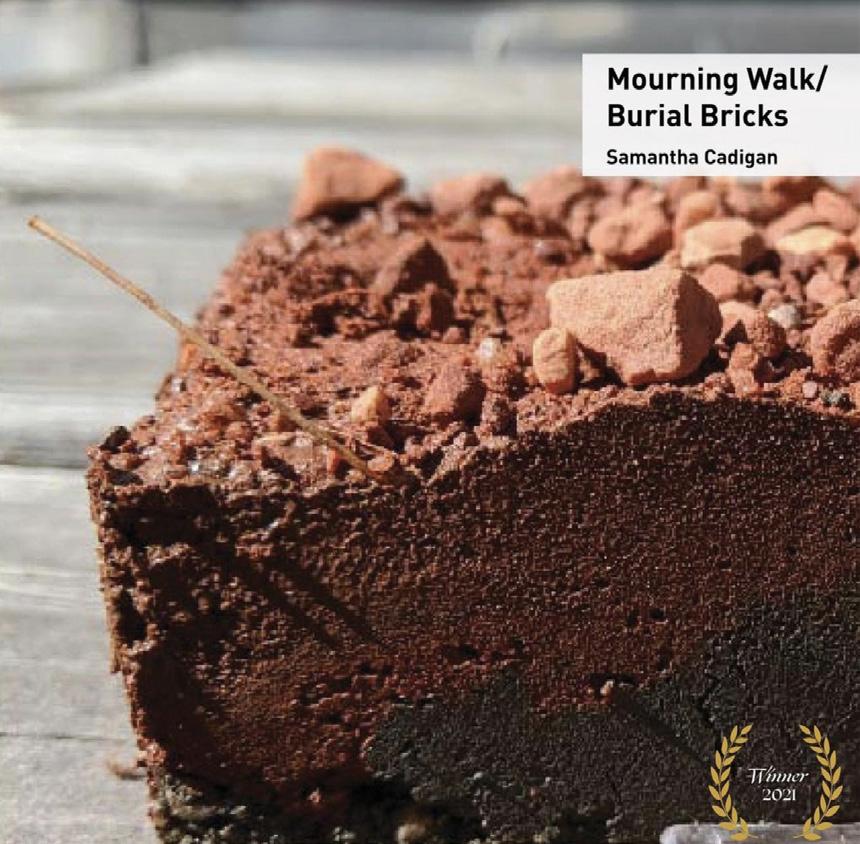



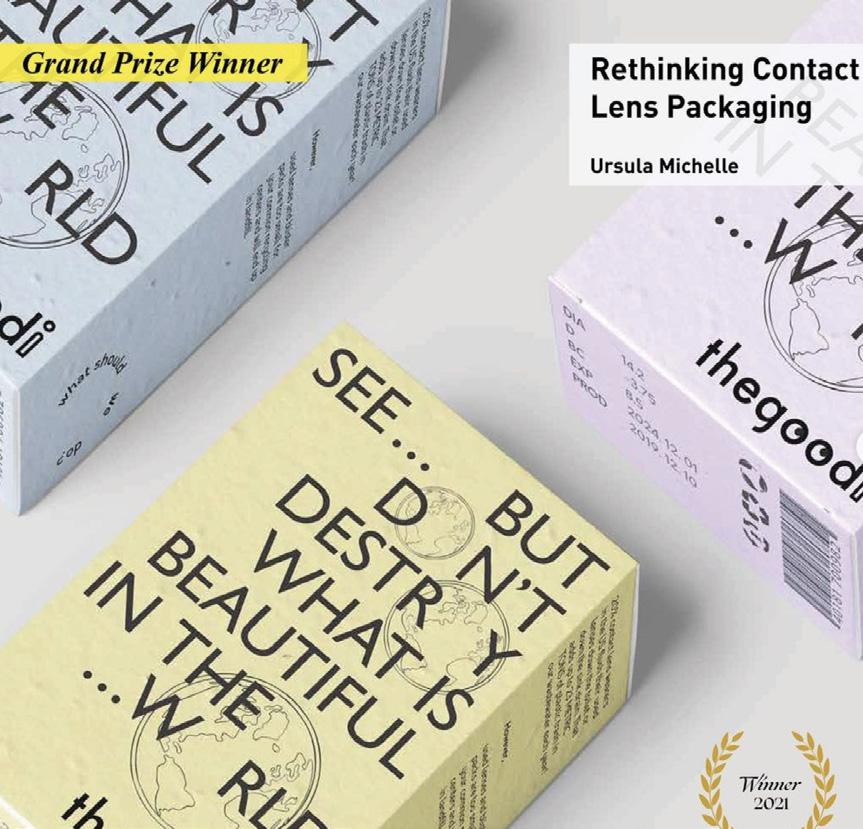



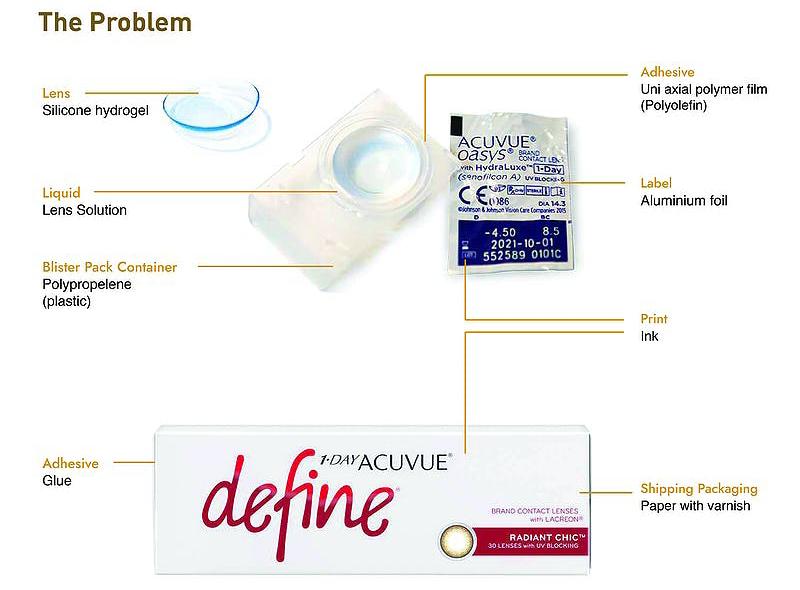




We have continued developing our marketing strategy for the online education programs. One of the goals in this year’s campaigns was to ensure we were speaking to the different professionals that the programs are geared for, including architects and designers, but also contractors and manufacturers. This led us to vary the choice of words between design, develop, build, craft and innovate.
We conducted two live virtual open houses for interested participants to ask questions and hear from the program alumni. Detailed accounts of these events can be found in the Education section of this report.
Much of our communications efforts are focused targeting observers and enrolling them in the eLearning program. The courses are designed to turn participants into advocates
The visuals for the campaign this year were symbolic of looking through an x-ray to understand more in depth what’s behind our buildings, our designs and our materials. The Spring campaign featured different spaces, such as office interiors, building facades, and spaces in the home such as desks and dining tables.
864 STUDENTS ENROLLED


The visuals for the campaign this year were symbolic of looking through an x-ray to understand more in depth what’s behind our buildings, our designs and our materials. The Summer campaign focused exclusively on highlighting affordable housing interiors and exteriors, including facades, courtyards, bedrooms and living rooms.
1,180 STUDENTS ENROLLED





20,000+ NEWSLETTERS OPENED
Within this grant year, we continued to send out newsletters to our 10,000 subscribers. In the previous years, newsletters were sent out periodically, but we made an effort to increase the frequency to every month. We have begun to track how many of our subscribers open the newsletters we send. In one instance, a project update on PA Hemp Home shared in a monthly newsletter resulted in a friend of the lab, Aronsons’ Floor Covering, reaching out and offering to partner with us on the project. It is safe to say that the decision to send these out monthly resulted in further engagement of our followers and subscribers.
YEAR 6 NEWSLETTER OPENS:
August: 2,434
September: 2,311
October: 2,387
December: 2,380
February: 2,556
March: 2,724
April: 3,127
May: 2,759
Our monthly newsletters have increased engagement and interest in our on-going projects which results in observers becoming supporters & advocates.

At the end of Year 6, a new competition TV show has taken audiences around the country and shown them the best of American design. America by Design is a new television show about inspiration, disruption, and changing the world through the power of design.
America by Design has reviewed work across the nation, and featured everything from a smart sprinkler system, to a contraceptive counseling tool, to our very own PA Hemp Home.
Parsons School of Design was honored to be a partner this season, and HML’s co-Directors Alison Mears and Jonsara Ruth were both featured among the esteemed panel of judges that also included Herman Miller’s Chief Creative Officer, Ben Watson, Podcast host of “Design Matters”, Debbie Millman PepsiCo’s Chief Design Officer, Mauro Porcini, and Senior Vice President at Salesforce Nalini Kotamraju.
But the PA Hemp Home wasn’t the only way Parsons School of Design was featured. As educational partners, Parsons nominated 4 Parsons students to audition for a position on the show.
MFA Interior Design student Monica Perez Ku was selected as a presenter on the show and was given the opportunity to speak to the audience about the importance of design throughout several episodes. Product designer and Parsons alum Yuri Ha, currently at Salesforce, also makes an appearance on the show.
Twenty-nine innovations from around the country were chosen to be highlighted on the show and our PA Hemp Home collaboration in New Castle, PA made it to the top 10 innovations for the People’s Choice Award! We were thrilled to see the enthusiasm around using locally produced, healthy building materials used for housing those who need it most, and having this be part of mainstream design conversations.
HML and Parsons participated in the first season of America by Design in four different capacities. The show featured Judges from HML, an ongoing demonstration project of HML’s, Parsons’ students and alumni.






HML is working with government agencies and other organizations to change their specification processes and establish industry guidelines for material health. By working on both large-scale policy shifts and applied demonstrations, HML aims to create systemic, long-term changes in practices that will affect the entire building materials chain.
In Year 6, members of HML participated in panels, gave presentations at virtual conferences and engaged professionals from different sectors of design, affordable housing, construction and even fashion. These events and conversations are critical for the work we do. Every opportunity to share our knowledge about materials and health within various industries increases our audience and creates more healthy material advocates.











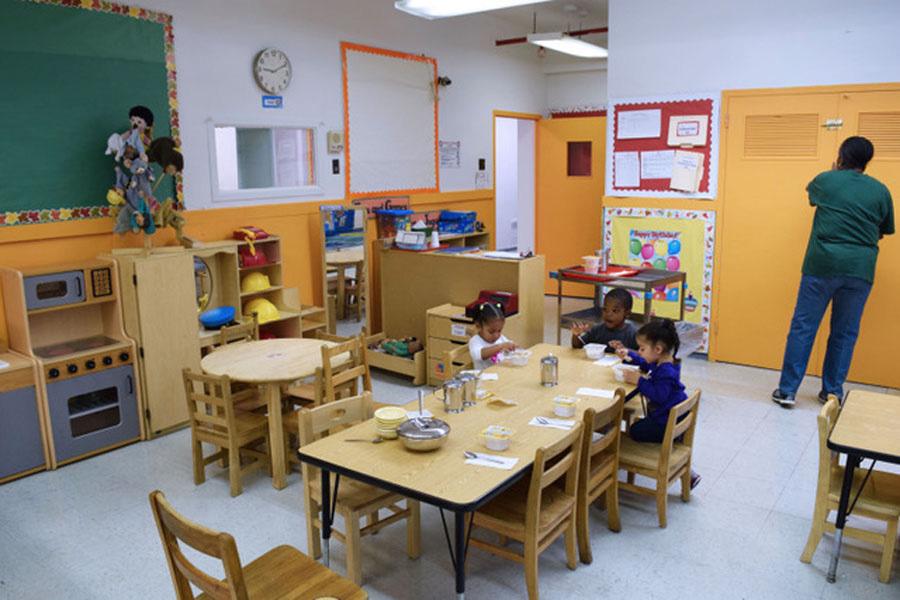






In Year 6, in order to increase engagement and outreach to industry professionals, HML took the opportunity to present to Kohn Pedersen Fox, a large architecture firm headquartered in New York City. In this presentation, HML team members spoke about how to engage your client, set health criteria and create frameworks that can be implemented so that the process of specification and design innovation produces the best and healthiest built work. For this presentation, the learning objectives were as follows:
01 Understand the relationships between human health, building materials, chemical toxicity, and environmental exposures
02 Identify the health and environmental impacts that building products can have throughout their life cycle
03 Identify products that are likely to be healthier options and evaluate them against your own criteria.
04 Understand materials in a wider environmental and human health context, compare products, assess variables and constraints, and make more informed decisions.
PRESENTERS:
Catherine Murphy, Senior Researcher, Healthy Materials Lab
Leila Behjat, Senior Researcher, Healthy Materials Lab
Bringing together designers from a large, local architecture firm, allowed for a group to go from observers, to supporters and advocates as well as learn how incorporate healthy materials into their projects.


In Year 6, the very first webinar presented by the US Hemp Building Association called Hemp Building: Moving the Industry Forward took place on May 6th, 2020. With the US Hemp Building Association’s Board, our Regional Leaders and different committees attendees learned how you can get involved in your area.
Guest presenters Alison Mears and Jonsara Ruth of Healthy Materials Lab, shared their in-depth presentation, Hemp+Lime, examining the feasibility of building with hemp and lime.
PRESENTERS:
Alison Mears, Co-Director, Healthy Materials Lab
Jonsara Ruth, Co-Director, Healthy Materials Lab
250+ VIRTUAL ATTENDEES
The Hemp Building Webinar effectively brought together a community of design and construction advocates. The event was framed to address advocates as it spoke to the innovation and urgency of the use of alternative materials.



In recent years, the need for sustainable manufacturing as well as the broader wellness movement have encouraged designers to pay closer attention to the materials and products that they design with, and the systems and spaces that they create. Now, thanks to the global pandemic, 2020 is a watershed moment for wellness and sustainability. How can designers navigate this challenge and create healthier, more sustainable spaces? This virtual conversation, hosted by Metropolis Magazine, was a deep dive into the intersection of health and sustainability.
PANEL:
Avi Rajagopal, Editor in Chief, Metropolis
Rand Eckman, Chief Sustainability Officer, HKS
Lona Rerick, Associate Principal, ZGF
Jonsara Ruth, Co-Director, Healthy Materials Lab
450+ ATTENDEES
This webinar brought together experts in the field of material health and sustainability which appealed to supporters and advocates of all facets of design from spec writing to embodied carbon buffs.


In response to the COVID-19 pandemic and the unprecedented challenges of transitioning NYC out of lock down, the Urban Design Forum and Van Alen Institute are teaming up to mobilize their collective network of distinguished design firms and other experts in support of neighborhood-scale efforts to safely and effectively reopen.
In working collaboratively with three, hard hit communities across the city, the goal of this timely initiative - Neighborhoods Now - is to devise strategies that address the challenges of reopening at distinct scales: citywide access to each neighborhood, circulation within the neighborhood, and specific typologies.
The process commenced in late June with a kick-off public program, co-hosted with the key neighborhood partners, one of whom was Alison Mears. This virtual convening brought together working group participants, the expert advisors, and the wider public to learn about the considerations of re-opening, from different disciplinary perspectives. The event served as an orientation for the working group participants, after which they engaged directly with community partners on problem diagnosis, ideation, and refinements through the month of July-Aug. Recommendations were compiled by Van Alen and Urban Design
395 VIRTUAL ATTENDEES
Forum for public dissemination and serve as the basis for a culminating public program, inviting working groups to share their work with a cross-section of communities, cityofficials, and interested practitioners.
PANEL:
Luisa Borrell, CUNY
Melissa Fleischut, New York State Restaurant Association
Alison Mears, Healthy Materials Lab
Andrea Batista Schlesinger, HR&A Advisors
Barika Williams, Association for Neighborhood & Housing Development
The outcome of this kick-off event was design recommendations to empower communities’ in responding to their immediate needs, while contributing to the broader, city-wide dialogue and strategy on pandemic-response.



Hana Kassem, principal at KPF, and Jonsara Ruth, co-founder of Parsons’ Healthy Materials Lab, outline the effects of the built environment on our well-being in this article published in Metropolis Magazine.
From Article:
“Most materials found in affordable housing interiors date back to decades prior to awareness of certain materials’ toxicity or are the lowest cost products due to budget constraints. High-VOC (Volatile Organic Compound) paint, vinyl tile, and particleboard cabinets are examples of low-cost products that contain many harmful chemicals including Endocrine-Disrupting Chemicals (EDCs), which can impair immune systems and can lead to serious chronic diseases. When a material off-gases or sheds harmful substances into our interiors, our bodies can absorb them through our skin, inhalation, or ingestion—damaging our endocrine and respiratory systems. Health practitioners and scientists have called this a silent epidemic.
A simple example is the ubiquitous plastic shower curtain which pollutes our interior spaces with phthalates. Phthalates, an EDC, are intended to make plastics soft and pliable, but when absorbed into our bodies they
6000+ READERS
can wreak havoc on our hormonal systems. Young children are particularly vulnerable as early exposure to phthalates is linked with asthma and allergies as well as cognitive and behavioral problems. Not surprisingly, rates of asthma are elevated in residents of public housing developments and underlying chronic diseases (such as asthma) put people at higher risk of dying from COVID-19....
Wellness-driven design ought to be demanded, especially when the project affects a great number of people, whether it be in public housing or public space. It becomes a matter of equity, not privilege, that the places in which people are spending close to 100 percent of their time are supporting, not degrading, their well-being—especially for those populations which have for so long been underserved. The pursuit of health and happiness is an essential human right and design can play a role in attaining it for all.”
This article was published to a potentially unaware audience, it reached thousands of readers which changes the audience to observers and supporters.



BuildingEnergy NYC is a conference designed by and for practitioners in the fields of highperformance building and design, energy efficiency, and renewable energy. Last year’s event brought more than 400 professionals from across the industry together to learn from and network with one another. Every year, sessions are chosen by a committee of NESEA Members and highlight best practices and lessons learned.
The conference theme of BuildingEnergy NYC 2020 is Carbon. Given the urgency with which we must dramatically reduce carbon emissions, we are expanding the scope of BuildingEnergy NYC beyond operational performance to include the carbon impact of buildings throughout their entire life cycle. We’ve come a long way in figuring out how to make buildings operate at peak efficiency; let’s now examine how these high-performing projects can operate effectively on a rapidly decarbonizing grid.
A project’s construction materials can have significant and enduring health effects—not only on the building’s occupants, but also on the community where the products are produced and disposed of, and on the people manufacturing and installing them. Our collective experience with COVID-19 has 25
VIRTUAL ATTENDEES
highlighted urgent social justice issues within our supply chains. But where does one start when trying to incorporate healthier materials into a project? And what about the overlap between healthier materials and embodied carbon in products? This comprehensive session emphasizes that with basic understanding, early coordination, and clear communication, every project team can deliver a healthier building.
PANEL:
Alison Mears, Co-Director, HML
Daniel Piselli, Senior Associate, Director of Sustainability, FXCollaborative
Austin Sakong, Senior Associate, FXCollaborative,
Charley Stevenson, Principal, Integrated Eco Strategy
This conference brought together observers, supporters and advocates who were looking for tools and effective ways to improve the material health of a project, therefore improving the health of occupants.




The 2020 virtual Hemp Building Summit was an international event to accelerate action towards sustainable building practices.
Following a successful inaugural summit in 2019, the 2020 Hemp Building Summit featured hemp building projects and professionals from across the world in a virtual, collaborative platform.
The event covered the technical specifics of working with hemp building materials and served as the premier resource for anyone interested in learning about these materials or seeing a snapshot of the industry’s latest.
238
VIRTUAL ATTENDEES
The Hemp Building Summit effectively brought together a community of design and construction advocates The event was framed to address advocates and supporters as it spoke to the innovation and urgency of the use of alternative materials.



This discussion with Nikil Saval, Jonsara Ruth, and Diana Hernández was on ideas for a just housing recovery as seen through a health equity lens after COVID-19. During our discussion, Sandra Lobo and Eric Fang joined us as respondents.
The link between access to safe and quality housing and our health has never been more evident than during COVID-19. The crisis has laid bare how housing policy and the design of our cities have failed to protect vulnerable residents, often low-income Black and brown communities. With housing as a clear social determinant of health, cities must rethink ways to provide access to quality housing in order to build healthier, more equitable cities.
PANEL:
Nikil Saval, Pennsylvania State Senate Elect
Jonsara Ruth, Design Director at Healthy Materials Lab
Diana Hernández, Assistant Professor of Sociomedical Sciences at Columbia University
Eric Fang, Perkins Eastman
Sandra Lobo, Northwest Bronx Community and Clergy Coalition
107 VIRTUAL ATTENDEES
A potentially unaware or observing audience is now aware of the link between safe and quality housing and our health, creating more advocates and supporters.






This event explored a range of possible applications of plant-based biomass. Presentations illustrated innovative experiences of biomass upcycling in the production of green energy and construction materials, as well as the potential environmental benefits of such techniques. Alison Mears from HML presented on HempBased Materials for Housing Construction and Renovation
SPEAKERS:
Pol Merino, HONEXT
Timothy Volk, SUNY Center for Sustainable and Renewable Energy
Alison Mears, Healthy Materials Lab
Dorin Miclaus, Municipality of Baia Mare
Sabina Leopa, URBASOFIA
Tihamer Sebestyen, GEA
Amaia Celaya-Alvarez, UIA Expert
46 ATTENDEES
The conversation around circularity in terms of industry and materials is an important one to have. At HML, looking at how these systems affect the people within them is where we want to spark interest and create supporters.



Coalesse recently hosted a panel of visionaries to address the question: “What Could Be?” on the topic of sustainability, materiality and environmentalism.
We believe the way forward is best approached by considering the entire ecosystem –materials, design, production, transportation, installation, use, end-of-life, etc… – and asking, “What Could Be?”
“We were hoping to inspire you, to give you some new ways to think about ‘How could I re-frame the problem? How could I challenge the status quo? What could I do individually or collectively to make a difference and make the solution better for the world?’” – Lew Epstein
PANEL:
Dr. Andrew Dent, Executive Vice President, Material Research, Material ConneXion
John Hamilton, Director of Global Design, Coalesse + Steelcase CMF, Steelcase Brands
Christine Vandover, Principal and Sr. Project Interior Designer, HOK
Katie Weeks, Managing Director of Communications and Development, Institute for Market Transformation
Alison Mears, AIA, LEED AP, Director and CoFounder, Healthy Materials Lab
65 ATTENDEES
This live panel discussion focused asked the important question, “What could be?” to encourage observers and advocates to think outside the box when it comes to sustainability and materials.

Designers and architects are continually facing a quest to make healthier choices for their projects. One burning challenge is to understand how to reduce embodied carbon in our projects. A new interactive tool to visualize and calculate carbon in materials is gaining global attention. The Construction Material Pyramid came out of Pelle Munch-Petersen’s Ph.D. He began to explore what material health issues really mean to the practice of architects and engineers. The Material Pyramid is an invitation to take ownership of the carbon emissions of products in construction.
Pelle Munch-Petersen, Ph.D., KADK - CINARK, and Martha Lewis, Head of Materials at Henning Larsen, joined us from Denmark on March 4th to discuss their advanced thinking on these complex issues.
SPEAKERS:
Pelle Munch-Petersen, Ph.D., KADKCINARK
Martha Lewis, Head of Materials at Henning Larsen
Jonsara Ruth, Co-Founder/Design Director, HML
Leila Behjat, Senior Researcher, HML
426 VIRTUAL ATTENDEES
This user-friendly materials pyramid brought a new level of accessibility to the conversation around embodied carbon. It was important that HML used its platform to bring this information to healthy material supporters and advocates alike.


In this “In the Design Studio” conversation, three changemakers explored what they and their respective sustainability movements can learn from each other. A chef/storyteller/ researcher, an artist/designer/educator and a social entrepreneur/advocate/businesswoman shared personal inspirations and compared lessons from sustainable food, fashion and furniture activism.
SPEAKERS:
Malika Leiper, Former chef and manager, Buvette; Researcher/Stortyteller/Strategist
Ngozi Okaro, Founder/Executive Director, Custom Collaborative
Jonsara Ruth, Co-Founder/Design Director, Parsons Healthy Materials Lab; designer/artist/ founder, Salty Labs
46 ATTENDEES
Participating in ReFashion week, brought HML’s insights and mission to a new, potentially unaware audience, and created supporters and advocates interested in fashion, food and sustainability.



For Wellness Wednesday, presented by the ASID NY Metro Health, Wellness and Sustainability Committee, Jonsara Ruth from HML gave a presentation called “Rethinking Materials for Design” and discussed the following questions during the interactive webinar.
Why should we care about healthy materials for interiors?
How can Interior Designers dramatically impact people’s long-term health and well-being?
What if designers placed people’s health at the center of all design decisions?
More and more scientific studies show that the materials surrounding us have a profound impact on human health. What if manufacturers of building materials considered the effects of production on people and on our planet’s ecologies?
75 ATTENDEES
Brining a presentation on material health to a large organization such as ASID, creates more supporters and advocates in the interior design sector.


In Year 6, members of HML appeared on various podcasts. Alison Mears and Jonsara Ruth, co-directors of the lab, joined Kevin O’Connor on “Clearstory,” a podcast produced by This Old House.
From the episode description: “As building technologies have improved and new building materials have found their way into construction sites, our homes have certainly become healthier than before... right? Host Kevin O’Connor speaks with professors Jonsara Ruth and Alison Mears, co-founders of the Healthy Materials Lab, a design research lab at Parsons School of Design, about the history of toxic building materials, what we use today that could be harmful to our health, and how we can create healthier built environments.”
Alison Mears also joined Whitney Page on “Renovate Remodel Revolt!” to talk about HML’s ongoing research and projects, as well as her experience as an architect and educator.
From Renovate Remodel Revolt!: “Co founder and director of Healthy Materials Lab and associate professor of architecture at Parsons school of design in NYC, Allison Mears calls herself a recovering architect. As a young woman in a traditionally man’s world, Allison says she never learned about the chemicals
652+ LISTENS
present in the projects she oversaw. Like many of us she was shocked to find that the materials she was using could cause harm. “You are responsible as an architect for the health, safety and wellness of people that occupy your buildings.” she says. How do we create benign systems so that at every point in the system they are not causing harm? How do we make waste into a resource? The health of the planet and the health of our buildings are inextricably linked. We breathe, they should breathe. Is it really all that radical?”
Joining podcast hosts for conversations about material health and affordable housing is a great way to expand our audience and inspire advocates in unexpected places.
This chapter, dedicated to research-related initiatives, highlights a diversification in the Lab’s projects and methods for addressing overall goals of building knowledge and awareness, and creating healthier homes for all. As shown in the Theory of Change, research initiatives are crucial to building pathways that enable people to change practices, and supporting advocacy efforts long term.
In conjunction with ongoing projects and initiatives that focus on Demonstration & Innovation, the Healthy Materials Lab is dedicated to conducting rigorous design based research with aims of contributing to the ever-changing and expanding field of material health. The Lab understands that expertise comes in many forms, from varied sources and experiences. The research initiatives of the Lab are deeply collaborative and engaged with partners in the fields of design, advocacy, public health, and more. Through engagement in diverse research initiatives, the Lab simultaneously gains from invaluable knowledge exchanges with researchers, practitioners, and advocates, while growing its network through meaningful, fulfilling partnerships. The variety of research endeavors jointly launched and continued this year add to the ever-shifting definition and application of measures for environmental health.







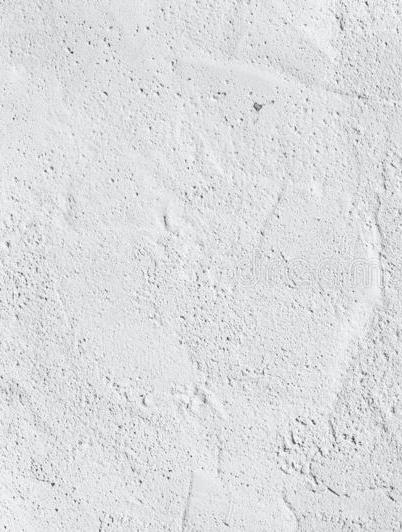
In June 2020, just months after the emergence of COVID-19, Parsons’ Healthy Materials Lab and MFA Lighting Design program began collaborating on research and testing of lighting technology and practices that can reduce the spread of harmful viruses and bacteria.
Before the pandemic, indoor spaces were not typically seen as a threat to our health, but the necessity for clean air in shared public spaces is now more evident than ever. This research project explores the application of germicidal ultraviolet radiation, particularly for the treatment of upper-room air, in order to re-occupy shared spaces safely. The goal is to generate the most effective means of integrating this technology with architectural lighting in a sustainable, safe, non-intrusive, and affordable way. At HML, we aspire to make spaces healthier and safe for occupants, on our own campus, in affordable housing, and beyond.
Ultraviolet light can be used to reduce the spread of airborne viruses and bacteria in indoor environments. We have been researching how this technology can utilize existing light fixtures in schools and other public spaces like the hallways of public housing developments.
Many commonly used disinfectants include antimicrobials which are chemicals that are associated with developmental, hormonal, and reproductive problems. Germicidal UV could be a healthier option. We have been researching and testing how germicidal ultraviolet light might be implemented to create healthier indoor spaces by reducing the spread of bacteria and viruses.
Germicidal UV uses specific wavelengths of non visible ultraviolet light to inactivate viruses and bacteria. Healthcare facilities often use germicidal UV to sanitize both air and surfaces. At the onset of the pandemic, we began wondering how this technology could be used in a wider variety of spaces, including our own school. After months of extensive, cross-disciplinary research, MFA Lighting Design faculty member, Craig Bernecker is sourcing lights that will be used in testing. The integration of UV-C technology with architectural lighting sparks interest in what this could mean beyond our own institution’s walls. Could this be a safer and easier way to keep the air clean in community spaces? Could it be a feasible option for affordable housing?
Craig Bernecker, Director, MFA Lighting Design
Alison Mears, Director, Parsons Healthy Materials Lab
Jonsara Ruth, Design Director, Parsons Healthy Materials Lab
Research Fellows: Katrina Matejcik, MFA Lighting and Interior Design
Meryl Smith, M. Arch INDUSTRY PARTNERS
Acuity Brands
The Lighting Quotient
Collaborating with Parsons’ School of Design MFA Lighting Design Program expands our audience in hopes to create more advocates through thinking about how light can improve occupant health in the age of COVID-19.
+ Need for thorough communication plan
Metaphors are helpful tools: “Tooth as… time machine, biological hard drive, tree rings...”


El plomo es un metal que puede ser peligroso para nuestra salud. Se encuentra en nuestras ciudades, y dentro de nuestras casas. Por ejemplo…
El plomo se encuentra en la tierra urbano y puede entrar al hogar por los zapatos. Los niños pueden ser expuestos cuando juegan afuera.
Unas casas más viejas pueden tener el plomo en las tuberías de agua. El plomo puede entrar nuestra agua y contaminarla.
La exposición al plomo en los niños es especialmente peligroso y puede resultar en: Problemas de aprendizaje y comportamiento
+
+ Avoid usage of “alarmist” language.





Avoid “us vs. them” language, as environmental health is a joint challenge we all face. Aim for avoidance of shame or guilt by prioritizing inclusive language.
Facilitate co-creation of knowledge by utilizing “collaborator” instead of “subject” throughout shared process.

Problemas digestivos
Algunos importadosproductos (como especias, cerámica, juguetes y dulces) pueden tener plomo.
La pintura en edificios construidos antes de 1978 puede tener plomo. Tenga cuidado con la pintura que se está despelando.
Pintura con plomo a lado de ventanas puede crear polvo y pedazos que son un daño a niños.
Para mantenerse libre de plomo
Parents are not to blame for environmental exposure.

+ This kind of research is aimed at late prevention and changes to policy.
+ Goal is to empower parents by sharing results.
+ Unique quality to tooth biomonitoring: Significance of time of exposure and dose.
+
+ Report back examples... it is an ongoing process!
+
Lávese las manos a menudo
¡Lavarse las manos no solo protege de los gérmenes! También es una excelente manera de prevenir la exposición al plomo.
Reducir el polvo
Utilice un trapeador húmedo o una aspiradora con filtro.
Reparación de pintura que se está despelando La pintura vieja puede contener plomo los niños pueden comerse los pedazos.
Consuma alimentos que reducen la absorción de plomo
¡Estos alimentos son saludables y nutritivos!
Identificar y eliminar el plomo en el hogar Tenga cuidado con las especias, cerámicas, juguetes, dulces y otros productos importados. Haz una prueba de agua para el plomo Solicite un kit en líneahay más información en el folleto. Solicite una inspección de casa para el plomo Puedes llamar al 311 para más información.
¡Lavarse las manos no solo protege de los gérmenes! También es una excelente manera de prevenir la exposición al plomo.
Reducir el polvo
Utilice un trapeador húmedo o una aspiradora con filtro.
Reparación de pintura que se está despelando
La pintura vieja puede contener plomo y los niños pueden comerse los pedazos.
Consuma alimentos que reducen la absorción de plomo
¡Estos alimentos son saludables y nutritivos!
Identificar y eliminar el plomo en el hogar
Tenga cuidado con las especias, cerámicas, juguetes, dulces y otros productos importados.
Haz una prueba de agua para el plomo
Solicite un kit en línea - hay más información en el folleto.
Solicite una inspección de casa para el plomo
Puedes llamar al 311 para más información.
Comparta esta información
Hable con sus vecinos, amigos y familiares sobre la reducción del plomo.
Comparta esta información Hable con sus vecinos, amigos y familiares sobre la reducción del plomo.
In partnership with the Icahn School of Medicine at Mount Sinai Hospital, the Healthy Materials Lab has embarked on the Tooth Biomonitoring Project, launched during Year 5 and continued throughout Year 6.
Historically, marginalized and front line communities have taken on the brunt of environmental injustices, and this particular project focuses on both the impacts of and treatment for lead exposure. Through an iterative design process informed by the Lab’s partners at Mount Sinai, and through the cocreation of knowledge via virtual interviews, the goal of the project is to create design assets and data visualizations that both share information about lead exposure, and empower individuals and groups to implement actions for healthier homes and neighborhoods.
A secondary goal is that the production of these design assets considers customization for utilization and dissemination for cohorts across the world. Since the project’s inception, both the HML and Mount Sinai teams have been adamant on approaching the issue of lead exposure from an equity lens, acknowledging that rather than place blame on impacted communities, the focus should be on building shared understanding of the root causes of disparities in environmental
health damage. By recognizing that many contemporary environmental injustices point to intentional harm inflicted by institutions and government entities through certain policy choices, the project moves towards environmental health as an ongoing endeavor to be adopted by all of us.
Traditional methods of measuring lead levels are through blood tests, the research team at Mount Sinai has been utilizing baby teeth as biomarkers for understanding exposure over lengthy periods of time. Measuring utilizing teeth touches upon the fact that lead is absorbed by our bones, and may remain in our bodies much longer after initial exposure. Not only do these assets aim to empower individuals and groups with knowledge about lead, it specifically intends to present steps to navigating processes for addressing lead concerns, which are typically made incredibly obtuse and difficult to understand. The goal is that being empowered with this information will lead to individual and collective mobilization. Populations included in this study were participant cohorts in NYC and Mexico City.
COLLABORATORS
Parsons Healthy Materials Lab Director, Alison Mears
Parsons Healthy Materials Lab Researchers and Research Assistants, Burgess Brown, Nada Salem and Daniela Castillo
Transdisciplinary Center on Early Environmental Exposures, Icahn School of Medicine, Mount Sinai Hospital:
Dr. Sarah Evans, PhD
Dr. Maida Galvez, MD
Community Engagement Coordinator, Luz Guel
This partnership highlights an environmental justice framing in the work of the Lab. By engaging in this research initiative that focuses on collective knowledge-production processes for developing informationsharing tools, HML is working towards directly addressing direct environmental harm and empowering new advocates.



The Adolescent Brain Cognitive Development (ABCD) Study® is the largest long-term study of brain development and child health in the United States. The National Institutes of Health (NIH) funded leading researchers in the fields of adolescent development and neuroscience to conduct this ambitious project. The ABCD Research Consortium consists of a Coordinating Center, a Data Analysis, Informatics & Resource Center, and 21 research sites across the country (see map), which have invited 11,878 children ages 9-10 to join the study. Researchers will track their biological and behavioral development through adolescence into young adulthood.
Using cutting-edge technology, scientists will determine how childhood experiences (such as sports, video games, social media, unhealthy sleep patterns, and smoking) interact with each other and with a child’s changing biology to affect brain development and social, behavioral, academic, health, and other outcomes.
The results of the ABCD Study will provide families; school superintendents, principals, and teachers; health professionals; and policymakers with practical information to promote the health, well-being, and success of children.
A HML Research Fellow and Dr. Sarah Evans, PhD from Mount Sinai discussed with the NIH research team the use of design practices and tools used to report back research information from lead and tooth biomonitoring studies. Best practices and tools were developed during the tooth biomonitoring studies in order to effectively disseminate information using clear visuals, non-alarmist language and other strategies. HML was able to offer precedent and insights for NIH to best share results.
This task force allowed HML to share its insights on how to effectively gather information to then create clear, compelling ways of illustrating it for an unaware audience.
HML uses demonstration projects as a tool to test the extensive research conducted as well as material properties and installation in a variety of project typologies and spaces.
Specification and installation of healthier, affordable interior products situates human health as a core criteria influencing decisions from the persons in charge of specifying. In addition, we are also conducting more experimental demonstrations in an exhibition format to highlight healthier materials currently used in affordable housing. In this context we look to surprise and inspire existing design students and provoke current designers to rethink their practices.
In Year 6, HML saw more demonstration projects than ever. This represents the efficacy of the teams research, learning, communication and dissemination of resources and information which allowed for fellow designers to look to us for collaborations in practice. The continued construction of the PA Hemp Home, multiple material specification collaborations and the beginning of three new hemp structures for elders in White Earth, MN show that the work over the years at HML is starting to take effect.






We are proud to be working on a HempLime home renovation, designed as healthy, affordable, and visitable housing. DON Enterprise in New Castle, PA is leading the collaborative project, which is called “PA Hemp Home” and is supported by the Pennsylvania Department of Agriculture.
DON Enterprise is a consumer-controlled, nonprofit organization in Western Pennsylvania that empowers people with disabilities to live as independently as they choose. Partners on the project are two expert HempLime builders: Cameron McIntosh from Americhanvre in Pennsylvania, and Alex Sparrow from UK Hempcrete in England. The Pennsylvania Housing Research Center at Penn State University will conduct energy and performance testing which will be disseminated to Pennsylvania businesses and residents. Healthy Materials Lab at Parsons is designing the house renovation and will conduct indoor air quality monitoring and testing.
DON renovates blighted homes and builds new homes in New Castle, an Act 47-designated city. They administer several home repair grant programs that improve the accessibility
and quality of homes across the city and surrounding counties. DON is testing the use of hemplime to renovate a blighted, wooden home as part of its revitalization program.
Pennsylvania Housing Research Center (PHRC) will analyze the thermal, insulation properties, and performance of hemplime as well as the resulting impact on utility costs in this residential renovation. A comparison will be made between properties of hemplime and residences using typical insulation and construction.
With Masters of Architecture student Meryl Smith, HML co-directors Alison Mears, and Jonsara Ruth developed architectural and construction plans used to renovate the home using hemplime for the exterior and interior walls. The ground floor is visitable, meaning that a person can visit without any accessibility issues, and human health is considered and prioritized at every stage. When the renovation is complete it will be a prototype for the renovation of similar houses in New Castle and other small cities nationwide.
COLLABORATORS:
Parsons Healthy Materials Lab Team: Alison Mears, Jonsara Ruth, Meryl Smith
DON Enterprise
Americhanvre
UK Hempcrete
From researching Hemp and Lime, to introducing graduate students to this innovation and partnering with DON Services, the start of construction on this project is creating excitement, advocacy and support around affordable housing with a healthy material.
After the pioneering renovation has been exhibited, DON Enterprise will sell the house at an affordable price to a member of the New Castle community.
HempLime is a sustainable, healthy material that can be used to retrofit or construct the walls of affordable housing. Here, the flame resistant properties of the mix protect the old wood frame from future fire. The hemp and lime mix also creates breathable, highly insulated walls, producing a house that is durable and offers increased comfort compared with currently available housing. The plant and mineral based material is naturally flame retardant and anti-microbial, eliminating the need for any added toxic
chemicals. HempLime walls continuously absorb odors, toxics, and carbon dioxide from the air making the indoor air cleaner than the air in buildings made from typical petrochemical based building materials.
This new climate resilient, affordable house will serve as an innovative prototype for future local housing. It will also expand uses for locally farmed industrial hemp. It will act as a model for the future of healthy, affordable and accessible housing, and prove to other developers that the radical change this industry needs is possible.






The Highland Park neighborhood is a majority Black community north of downtown Richmond, Virginia. Its 3,050 residents, together with community-based organizations and business, civic and local faith leaders, are working to reduce poverty, crime, and develop solutions to address the area’s widening generational gap and bring resources to the commercial corridor
The 10,000 square-foot (929 square meters) Benefield Building currently has one tenant, the Six Points Innovation Center (6PIC) nonprofit, which occupies 4,000 square feet. It is one of many underutilized or vacant buildings lining the Highland Park innovation corridor. Our pro bono adaptive reuse project will empower the Highland Park community to create a purpose for Benefield in a neighborhood that is in the initial stages of revitalization.
The Richmond-based Citizen HKS project team, working with its non-profit partner Boaz & Ruth, organized an intensive community engagement process to create an inclusive
design for the Benefield Building, reflective of their wants and needs: a place that anchors and supports the community’s youth, serving as a catalyst for change and hope.
Healthy Materials Lab collaborated with the team at HKS in order to set material health goals for the project as well as establishing a vetting process for products to be donated or procured.
COLLABORATORS:
Parsons Healthy Materials Lab Team: Alison Mears, Leila Behjat, Meryl Smith, Catherine Murphy
HKS Architects, Richmond, VA
19,000 square feet of equitable space
32 residences approx. 100 residents approx.
Large architecture firms, such as HKS, provide manufacturers with a lot of business. This collaboration was a good opportunity to encourage designers to ask manufacturers for disclosures and encourage transparency.


During Year 6, HML began the Healthy Affordable Renovation Project, a collaboration between HML and HPDC (Health Product Declaration Collaborative). Each party’s expertise is forming complementary teamwork. HML has been researching and vetting established healthier products to provide a comprehensive list of materials to be used in Affordable Housing Projects. The main source of this process has been the in-house case studies produced by HML over the years.
Additionally, HML is adding a few products that are excellent candidates for becoming an affordable option if pricing could match the possible ranges. The list highlights clearly if the products have a HPD (Health Product Declaration) and if not, the core resource used to vet this product and deem it to be a match for the Material Collection Database is provided.
The list spans over the healthier building categories: Flooring, Paint, Tile, Wallboard, Carpet and Insulation. Similar product groups for healthier affordable housing Kitchen and Bathroom applications are being established.
Starting mid October 2020, HPDC began cross checking the list between the provided sources and their own data platform, with their current focus being Insulation.
A “chemicals of concern” database and overview of product breakdowns are being established by HPDC, which will rate chemicals on a scale of 1-4 according to their level of concern, 1 being the most concerning. Establishing a rating system for chemicals provides the ability to compare them side by side. These chemicals can be analyzed, compared with other sources and potentially relayed back to manufacturers to encourage them to establish an HPD. Therefore, creating more transparency about materials throughout the Affordable Housing sector.
COLLABORATORS: Parsons Healthy Materials Lab Team: Alison Mears, Leila Behjat
HPDC - Healthy Product Declaration Collaborative Arizona State University
34+ PRODUCTS OVER 6 CATEGORIES
By creating a palette of healthy and affordable materials for renovation, observers and supporters can easily access this information and incorporate it into their projects.

HML is working with Determined by Design (DbD) to identify healthier materials for products typically specified in an affordable residential unit.
Determined by Design is an interior design firm located in Washington DC. On their website, they very clearly state their goals and their missions to be: “At Determined by Design our design’s are shaped by our core belief well-designed interior spaces are not a luxury for a few but a standard for all! Our why is to advocate for design equity so every person’s value is uplifted by the spaces they inhabit. This is our guide post for every project, community and partner we work with. We design to change lives and represent a community’s greatest strengths - history, culture, + diversity. To do the work our foundation has to be rooted strongly in advocacy for design equity for all.”
working to review DbD’s current material list, suggest healthier products where necessary and to highlight why certain materials should be substituted with healthier options.
COLLABORATORS:
DbD shared with HML a list of typical materials currently specified for their affordable housing developer clients and the criteria by which their clients evaluate materials (cost, performance, maintenance, etc). HML is
This collaboration allows HML to assist and educate an Interior Design firm working in the Affordable Housing sector on selecting healthier materials suitable for large residential projects.
This collaboration began with products being used in the residences in two current development projects, one in Washington, DC, and another in Boston, MA. The buildings range in size between 104-200 units each. These healthier products will be applicable to many other projects/clients currently engaged by DbD. HML has begun to evaluate materials from two specific product categories: Flooring and Cabinetry. 104200 UNITS


In Year 6, we have begun working with local women and Winona LaDuke’s Honor the Earth organization to develop new housing on the White Earth Reservation in Northern Minnesota.
Together, we will propose designs for new homes that celebrate the long lives of the women, enhance their current work, build places of sanctuary for themselves, their grandchildren, and future generations on their own land. Instead of being beholden to others, the nation will chart its own future through innovative local construction. The first homes will be constructed of hemp combined with local lime to create new models of sustainable, healthy homes. We will test new construction systems and propose training programs that will create new jobs. Through this process we will create models of prototypical housing for the future: healthy homes for all people.
“We were told that we would come to a point in our lives as Anishinaabe people, where we would be faced with a path with a fork in it...In the Time of the Seventh Fire, which is the time that we are in now, we are told that we would have a choice between two paths: one path they said would be well worn, but it would be scorched, and the other path would not be well-worn, and it would be green. It would be our choice upon which path to embark. I’m pretty sure that this moment in time is now, where we must take the initiative and have the courage to make that green path.” Winona LaDuke, Material Health : Design Frontiers.
12 RESIDENTS (2 grandmothers and 10 grandchildren)
This demonstration project brings affordable and healthy housing to a community that has faced years of oppression and inequality. At HML, we believe that high-quality healthy housing is for everyone and we aim to provide designs and specifications for affordable homes.
ARCHINECT
“New architecture and design competitions call for selfreflection and design intention”

May 2020
METROPOLIS MAGAZINE
“Designing for Equity and WellBeing in the COVID-19 Era”

August 2020
UNITED PRESS INTERNATIONAL
“U.S. hemp-based construction advances with fire-safety tests, new book’”

May 2020
METROPOLIS MAGAZINE
“Role Models Award Winners Lead the Way in Healthy Materials”

July 2020
NEW CASTLE NEWS

“DON Enterprises awarded grant to promote hempcrete building material”
August 2020
OFFICE INSIGHT
“Parsons Healthy Materials
Lab: One program, one new beginning”

August 2020
METROPOLIS MAGAZINE
“With Help from the Federal Government, Biobased Products are Proliferating”

September 2020
OFFICE INSIGHT
“Harvard Kicks Up the DUST in Our Workspaces // A Lecture for Parson’s Healthy Materials Lab”

September 2020
ARCHITECTURAL DIGEST
“6 Sustainability Trends That Will Emerge in the Design World in 2021”
December 2020

BUSINESS OF HOME
“Clients don’t know how toxic their homes are. Designers should”
December 2020
VOGUE RUSSIA

“3 podcasts for your first summer walks”
December 2020
THE NEW SCHOOL
“Carbon + Chemicals: Health Impacts of Building Materials”


March 2021
THE NEW SCHOOL
“4th Year in a Row, Parsons School of Design Named Best Art and Design School in the Country”
March 2021
BUSINESS WIRE

“Global Kombucha Leather Market (2020 to 2026) - Industry Analysis, Trends, Market Size, and Forecasts”

March 2021
GRIST

“The secret ingredient in Paris’ green public housing”
March 2021
DEXIGNER
“Parsons Healthy Materials Lab Launches 6th Annual Role Models Contest”
March 2021
TUSCON
“Rosie on the House: Go beyond the recycling bin for an ecofriendly home”

April 2021
WORLD ARCHITECTURE
“Role Models Contest By Parsons Healthy Materials Lab”


April 2021
DESIGNER TODAY
“Designing Better: How sustainable is the industry?”

April 2021
ARCH DAILY
“Role Models Contest”
April 2021
NEXT CITY
“The Secret Ingredient in Paris’ Green Public Housing: Hemp”

April 2021

FORBO* Resilient flooring


BENJAMIN MOORE* Paint

ROMA PAINTS* Paint
ARMSTRONG Resilient flooring

SHERWIN-WILLIAMS* Paint

FIRECLAY TILE Tile

NORA Resilient flooring

ECOVATIVE* Biomaterials

ECO SUPPLY * Green Building Materials
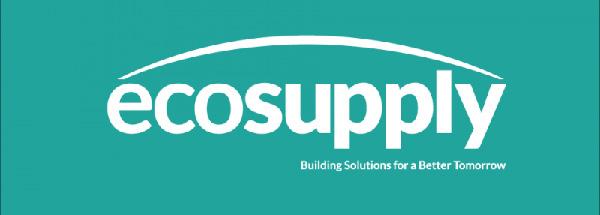
SHAW CONTRACT GROUP Carpet flooring
CARPETCYCLE* Material recycling

INDUSTRIAL LOUVERS Architectural Metal Products

HOUSE OF TAI PING Carpet flooring

COCO-MAT* Bedding products

ARONSON’S FLOORING Flooing Solutions*

THERMaCORK* Insulation

DESIGN WITHIN REACH Furniture
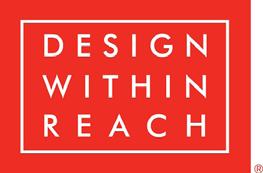
DALTILE* Tile
FLOYD* Furniture

COLUMBIA FOREST PRODUCTS* Plywood
* Thank you to these companies for their generous donations.

FOUNDATION COMMUNITIES


Austin, TX
DON ENTERPRISES

New Castle, PA
HONOR THE EARTH
Minneapolis, MN
AMERICHANVRE PA
DETERMINED BY DESIGN

Washington DC
HKS ARCHITECTS


Richmond, VA
MOUNT SINAI

WEST HARLEM GROUP


DEPARTMENT OF HEALTH

NYCHA

MONADNOCK
HENNING LARSEN
Copenhagen, Denmark
ROYAL DANISH ACADEMY OF FINE ARTS
